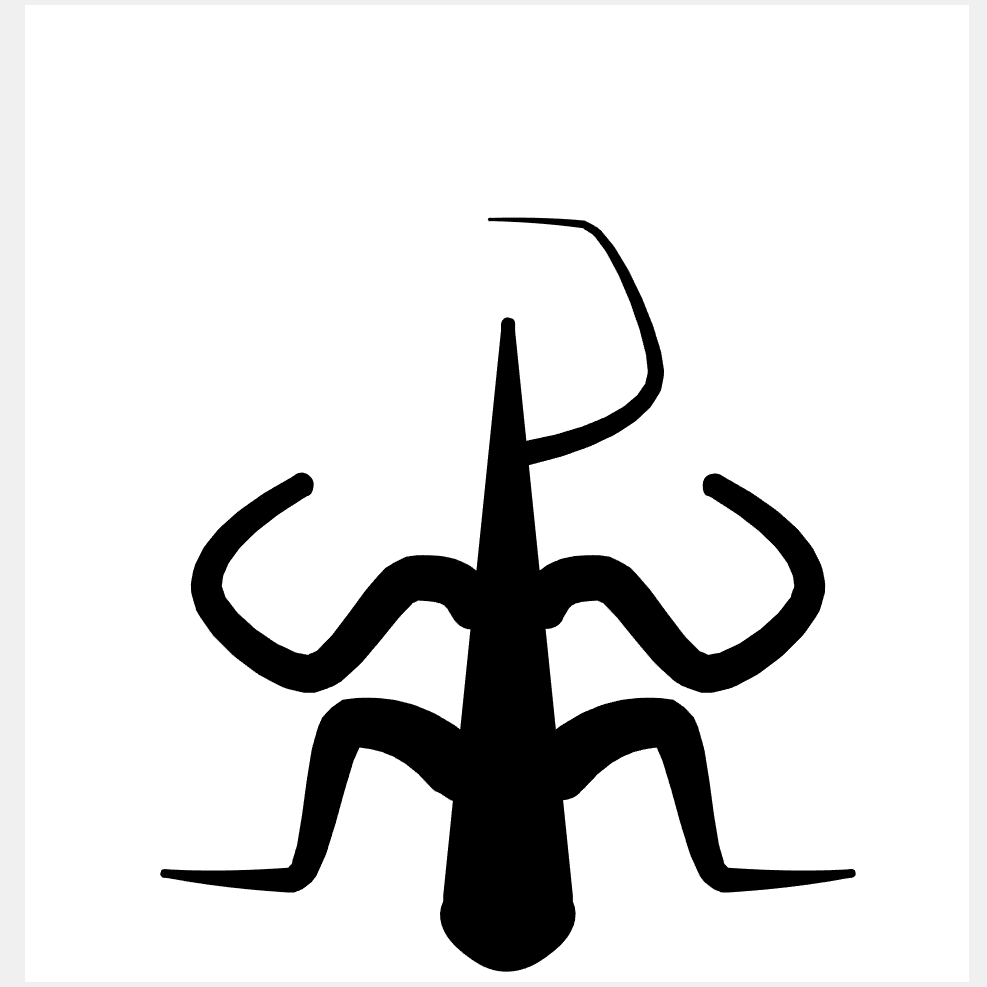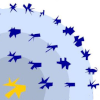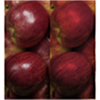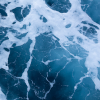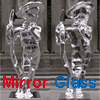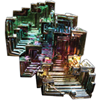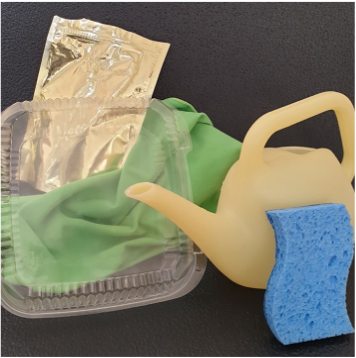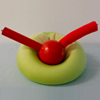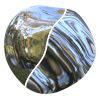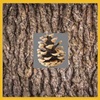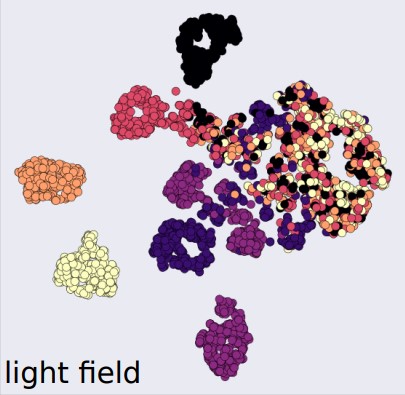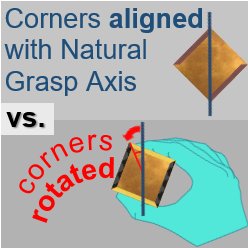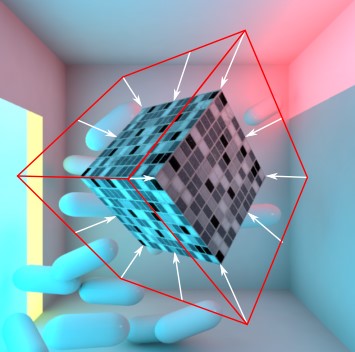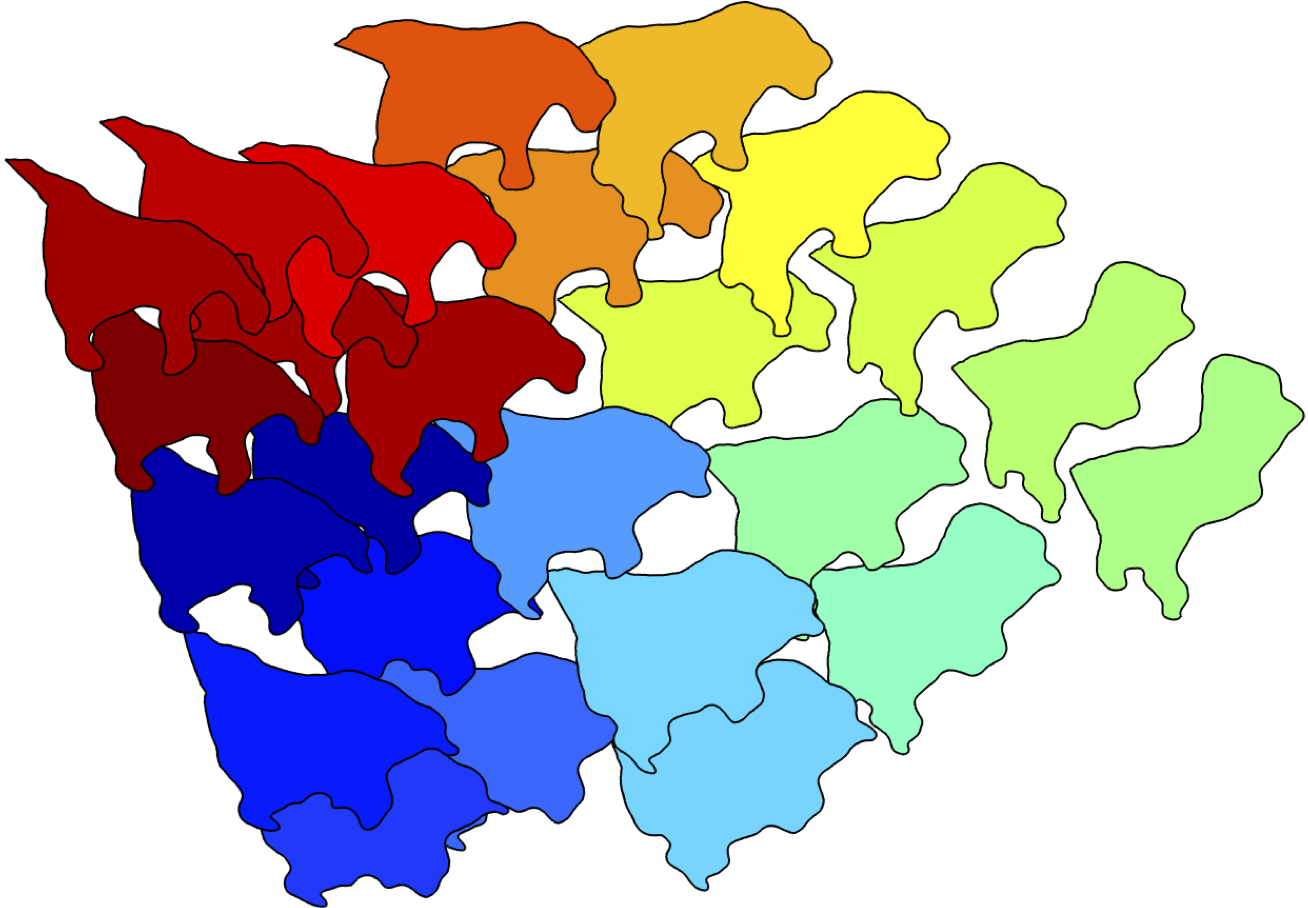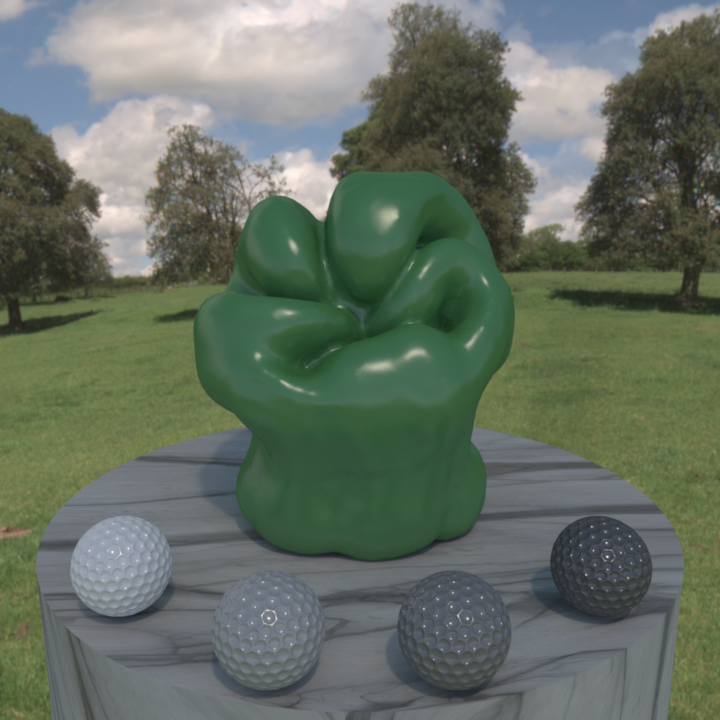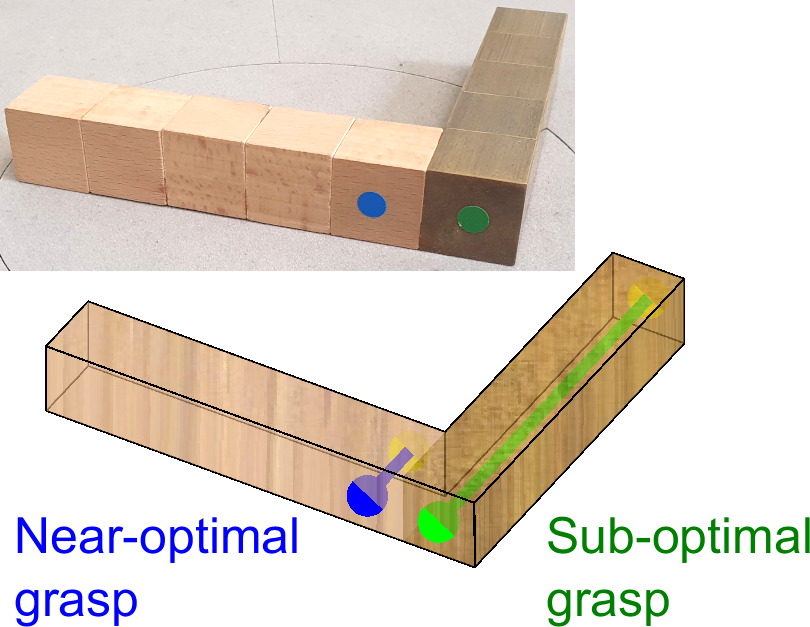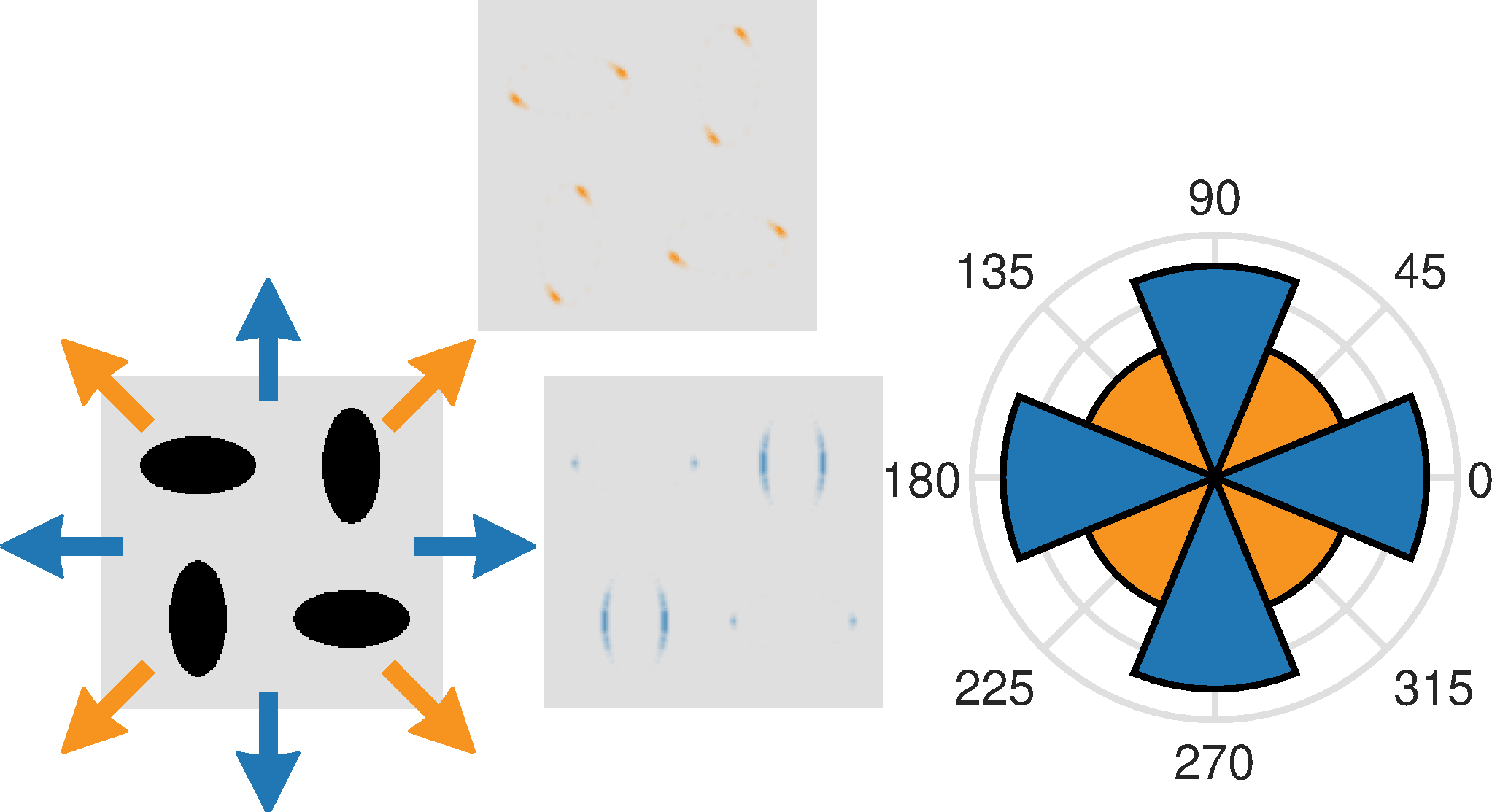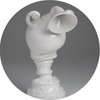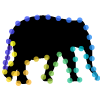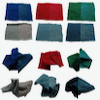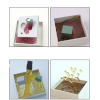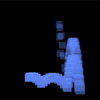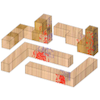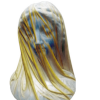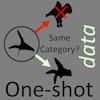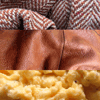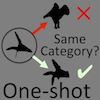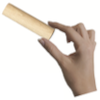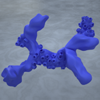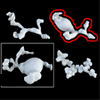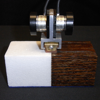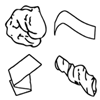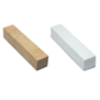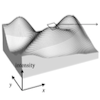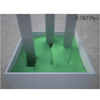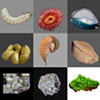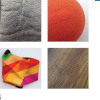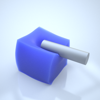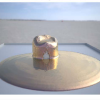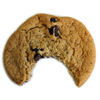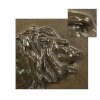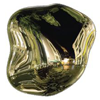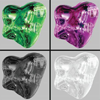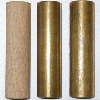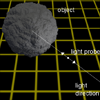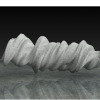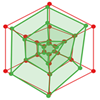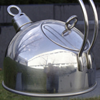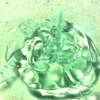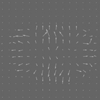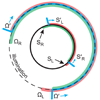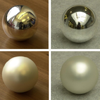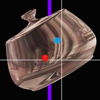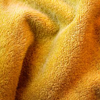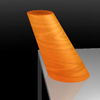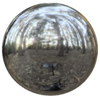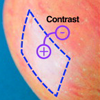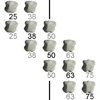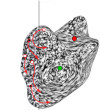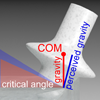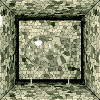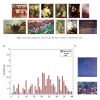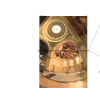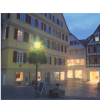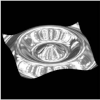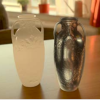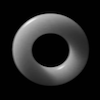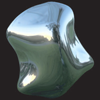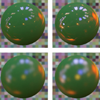preprint
-
- Authors:
- Morimoto, Akbarinia, Storrs, Cheeseman, Smithson, Gegenfurtner & Fleming
- Journal:
- bioRxiv
- Summary:
-
We show that tiny neural networks with very few filters can reproduce human gloss perception judgments better than even much larger neural networks trained to estimate physical specular reflectance.
- Citation:
-
Morimoto T, Akbarinia A, Storrs KR, Cheeseman JR, Smithson HE, Gegenfurtner KR & RW Fleming. Human gloss perception reproduced by tiny neural networks, BioRxiv. https://www.biorxiv.org/content/10.1101/2025.05.09.653112v1
-
- Authors:
- Paulun, Bayer, Tenenbaum & Fleming
- Journal:
- bioRxiv
- Summary:
-
How do we judge physical properties like elasticity? By carefully selecting examples out of >100K movies of bouncing cubes, here we tease apart the predictions of multiple plausible cues that they might use. The results show that some simple heuristics predict both successes and key errors of human judgments.
- Citation:
-
Paulun, V., Bayer, F., Tenenbaum, J., & Fleming, R. Efficient Visual Heuristics in the Perception of Physical Object Properties, bioRxiv: https://doi.org/10.1101/2023.03.24.534031
2025
-
- Authors:
- Filip, et al
- Journal:
- Royal Society Open Science
- Summary:
-
We show that it is possible to summarise the appearance of a wide range of materials with 16 simple perceptual attributes, and developed an algorithm based on such measurements that can predict human perceptual judgments
- Citation:
-
Filip J, Děchtěrenko F, Schmidt F, Lukavský J, Vilímovská V, Kotera J & RW Fleming. Material Fingerprinting: Identifying and Predicting Perceptual Attributes of Material Appearance, R. Soc. Open Sci., 12: 250513 https://doi.org/10.1098/rsos.250513
- Data
- Download data & code
- Data
- Download mobile app
-
- Authors:
- Cheeseman, Ferwerda, Morimoto & Fleming
- Journal:
- Journal of Vision
- Summary:
-
We find that human gloss discrimination—and how it varies across lighting, viewpoint and shape—is well predicted by a low-level visual difference predictor model.
- Citation:
-
Cheeseman JR, Ferwerda JA, Morimoto T & RW Fleming (2025). Gloss discrimination: Towards an image-based perceptual model. Journal of Vision, 25(10):6. https://doi.org/10.1167/jov.25.10.6
- Data
- Download stimuli & data
-
- Authors:
- Aubuchon*, Vergne*, Cholewiak, Kunsberg, Holtmann-Rice, Zucker & Fleming
- Journal:
- PNAS
- Summary:
-
By analysing millions of pixels in renderings of shaded objects, we discovered a striking statistical relationship between image orientations and 3D surface curvature properties. A model based on this observation correctly predicts some key illusions in 3D shape perception.
- Citation:
-
Aubuchon C, Vergne R, Cholewiak SA, Kunsberg B, Holtmann-Rice D, Zucker, SW & RW Fleming (2025). Orientation fields predict perception of 3D shape from shading, PNAS. 122(28)e2503088122. https://www.pnas.org/doi/10.1073/pnas.2503088122
- Data
- Download data & code
-
- Authors:
- Lepori, Hartmann, Dehn, Chessa, Fleming, Maiello
- Journal:
- Journal of Neurophysiology
- Summary:
-
Participants rarely spontaneously choose two-digit grasps when freely picking up objects, yet we find that certain previous insights from precision grip experiments may still extend to natural, unconstrained grasping behaviours.
- Citation:
-
Lepori F, Hartmann F, Dehn K, Chessa M, Fleming RW, Maiello G. (2025). Does Precision Grip Research Extend to Unconstrained, Multidigit Grasping?, Journal of Neurophysiology. https://journals.physiology.org/doi/abs/10.1152/jn.00008.2025
- Data
- Download data & code
-
- Authors:
- Dehn et al.
- Journal:
- Royal Society Interface
- Summary:
-
Untrained observers can visually cluster neuron types into classes based on their distinct morphologies using just a few shape parameters. This suggests it may be feasible to automate cell classification based solely on shape.
- Citation:
-
Dehn K, Maiello G, Hartmann F, Morgenstern Y, Hawkins SJ, Offner T, Walter J, Hassenklöver T, Manzini I, Fleming RW (2025). Human shape perception spontaneously discovers the biological origin of novel, but natural, stimuli. Journal of the Royal Society Interface, 22: 20240931
- Data
- Download data & code
-
- Authors:
- Schmidt, Hebart, Schmid and Fleming
- Journal:
- PNAS
- Summary:
-
We use a large-scale data-driven approach to uncover the core latent dimensions in our mental representation of materials.
- Citation:
-
Schmidt, F., Hebart, M. N., Schmid, A. C., & Fleming, R. W. (2025). Core dimensions of human material perception. Proceedings of the National Academy of Sciences, 122(10), e2417202122.
- Stimuli
- Stimuli
- Data
- Data
-
- Authors:
- Schmidt, Tiedemann, Fleming & Morgenstern
- Journal:
- Memory and Cognition
- Summary:
-
We show that humans can infer shape transformations from observation and apply them to other objects by drawing the result. This illustrates how we not only perceive but also ‘understand’ shape.
- Citation:
-
Schmidt, F., Tiedemann, H., Fleming, R. W., & Morgenstern, Y. (2025). Inferring shape transformations in a drawing task. Memory & Cognition, 53, 189–199.
- Data
- Data
2024
-
- Authors:
- Schmidt, Noejovich, Chakalos & Phillips
- Journal:
- Cognition
- Summary:
-
Animated motion is frequently exaggerated to give objects ‘life’. We found that observers tolerate squash and stretch of a bouncing ball well beyond the physically possible, which might help to bridge the uncanny valley when animating reality.
- Citation:
-
Schmidt, F., Noejovich, L., Chakalos, G., & Phillips, F. (2024). Perceptual plausibility of exaggerated realistic motion. Cognition, 251, 105880. https://doi.org/10.1016/j.cognition.2024.105880
- Data
- Data
-
- Authors:
- Stewart, Fleming & Schütz
- Journal:
- Proceedings of the Royal Society B
- Summary:
-
We show that qualitatively special viewpoints of 3D objects (‘canonical views’) can be predicted by a simple but quantitative optical flow model, which measures how surface points shift in the image as viewpoints change.
- Citation:
-
Stewart, E. E. M., Fleming, R. W., & Schütz, A. C. (2024). A simple optical flow model explains why certain object viewpoints are special. Proceedings of the Royal Society B, 291: 20240577. https://doi.org/10.1098/rspb.2024.0577
- Resources
- Download data & stimuli
-
- Authors:
- Morgenstern, Storrs, Schmidt, Hartmann, Tiedemann, Wagemans & Fleming
- Journal:
- Current Biology
- Summary:
-
By directly comparing the predictions of low- and high-level models of shape adaptation, we demonstrate that high-level aftereffects are the result of shape representations that are derived from the statistics of natural forms.
- Citation:
-
Morgenstern Y, Storrs KR, Schmidt F, Hartmann F, Tiedemann H, Wagemans J & RW Fleming (2024). The statistics of natural shapes predict high-level aftereffects in human vision. Current Biology, 34(5), 1098-1106. https://doi.org/10.1016/j.cub.2023.12.039
- Resources
- Download data & code
-
- Authors:
- Ernst, López, Aubret, Fleming and Triesch
- Journal:
- IEEE ICDL 2024
- Summary:
-
We trained a self-supervised neural network with image sequences in which illumination changed gradually. The learning objective was to map subsequent views to nearby locations in the model’s latent space. The model learned lighting-invariant colour representations (i.e., colour constancy) without any explicit labels.
- Citation:
-
MR Ernst, FM López, A Aubret, RW Fleming & J Triesch (2024). Self-Supervised Learning of Color Constancy. IEEE International Conference on Development and Learning (ICDL), Austin, TX, USA, pp 1-7. https://doi.org/10.1109/ICDL61372.2024.10644375
-
- Authors:
- Guerrero‐Viu, Subias, Serrano, Storrs, Fleming, Masia and Gutierrez
- Journal:
- Eurographics
- Summary:
-
We trained a model to predict human gloss perception in rendered images. Combining a small set of human annotations (“strong labels”) with a larger number of “weak labels” derived directly from physical parameters or the image greatly enhances the model’s predictions.
- Citation:
-
Guerrero‐Viu J, Subias JD, Serrano A, Storrs KR, Fleming RW, Masia B & D Gutierrez (2024). Predicting Perceived Gloss: Do Weak Labels Suffice? Computer Graphics Forum. 43(2), e15037. https://doi.org/10.1111/cgf.15037
-
- Authors:
- Filip, Lukavský, Děchtěrenko, Schmidt & Fleming
- Journal:
- Journal of Vision
- Summary:
-
A data-driven approach characterizes the perceived appearance of 30 samples of wood veneer using a “visual fingerprint” that describes each sample as a multidimensional feature vector.
- Citation:
-
Filip, J., Lukavský, J., Děchtěrenko, F., Schmidt, F., & Fleming, R. W. (2024). Perceptual dimensions of wood materials. Journal of Vision, 24(5), 12-12. https://doi.org/10.1167/jov.24.5.12
- Resources
- Download data & stimuli
2023
-
- Authors:
- Klein, Maiello, Stubbs, Proklova, Chen, Paulun, Culham & Fleming
- Journal:
- Journal of Neuroscience
- Summary:
-
In a model-guided fMRI study, we disentangle distinct neural representations for different aspects of grasp planning and execution, related to object mass, grasp size and grasp axis.
- Citation:
-
Klein, L., Maiello, G., Stubbs, K., Proklova, D., Chen, J., Paulun, V., Culham, J., & Fleming, R. Distinct neural components of visually guided grasping during planning and execution Journal of Neuroscience 6 December 2023, 43 (49) 8504-8514
https://doi.org/10.1523/JNEUROSCI.0335-23.2023
- Resources
- Download data & code
-
- Authors:
- Stewart & Fleming
- Journal:
- Current Biology
- Summary:
-
Participants make anticipatory eye movements in the direction they expect an object to move, inferred only from the object's shape. They do this even when it is disadvantageous to do so, i.e., when we moved the objects in the opposite direction on half the trials.
- Citation:
-
Stewart EEM & Fleming RW (2023). The eyes anticipate where objects will move based on their shape. Current Biology, 33(17): R894–R895. https://doi.org/10.1016/j.cub.2023.07.028
- Resources
- Data
-
- Authors:
- Stegmann and Schmidt
- Journal:
- Scientific Reports
- Summary:
-
Many homologies were discovered before Darwin and without systematic criteria. In two experiments, we compared naive participants and experts to show that these discoveries could be based on natural cognitive human abilities.
- Citation:
-
Stegmann, U., & Schmidt, F. (2023). Homology judgements of pre-evolutionary naturalists explained by general human shape matching abilities. Scientific Reports, 13, 12269. https://doi.org/10.1038/s41598-023-39036-2
- Resources
- Data
-
- Authors:
- Stewart, Hartmann, Morgenstern, Storrs, Maiello and Fleming
- Journal:
- Current Biology
- Summary:
-
Mental comparisons of 3D object viewpoints have been assumed to occur on 3D representations.
We show that non-uniformities in object viewpoint comparisons are captured by a 2D model,
suggesting that such computations rely on a ‘mental rendering’ of the simulated proximal viewpoint transformation.
- Citation:
-
Stewart, E.E.M., Hartmann, F.T., Morgenstern, Y., Storrs, K.R., Maiello, G., and Fleming, R.W. (2023). Mental object rotation based on two-dimensional visual representations, Current Biology, 32(21), PR1224-R1225. https://doi.org/10.1016/j.cub.2022.09.036
- Resources
- Data
-
- Authors:
- Fleming
- Journal:
- Current Biology
- Summary:
-
This Dispatch provides a high-level summary of a recent study by Marlow et al, on how self-occluding contours help us distinguish opaque and translucent materials.
- Citation:
-
Fleming, R.W. (2023). Visual perception: Contours that crack the ambiguity conundrum. Current Biology, 33(14), PR760-R762. https://doi.org/10.1016/j.cub.2023.06.024
- Resources
- Original article of Marlow et al
-
- Authors:
- Anderson, Storrs and Fleming
- Journal:
- Behavioral and Brain Sciences
- Summary:
-
In this commentary on a BBS article by Bowers et al, we argue that data-driven approaches can discover important regularities in sensory signals that tell the brain about the structure of the outside world.
- Citation:
-
Anderson BL, Storrs KR, Fleming RW (2023). Where do the hypotheses come from? Data-driven learning in science and the brain. Behavioral and Brain Sciences. 46: e386. https://doi.org/10.1017/S0140525X23001565.
- Resources
- Original article by Bowers et al
-
- Authors:
- Morimoto, Akbarinia, Storrs, Cheeseman, Smithson, Gegenfurtner & Fleming
- Journal:
- JOV
- Summary:
-
We find good hue matching but surprisingly bad gloss constancy across a wide range of shapes and illuminant environments. Yet participants' matches were highly consistent, indicating they are tapping into similar cues.
- Citation:
-
Morimoto, T., Akbarinia, A., Storrs, K., Cheeseman, J. R., Smithson, H. E., Gegenfurtner K. R. & Fleming, R. W. (2023). Color and gloss constancy under diverse lighting environments. Journal of Vision. 23(7):8. doi: https://doi.org/10.1167/jov.23.7.8.
- Resources
- Download data & code
-
- Authors:
- Hartmann, Maiello, Rothkopf & Fleming
- Journal:
- Jove
- Summary:
-
We demonstrate a workflow for estimating full contact regions between the human hand and objects as participants grasp them naturally, by measuring intersections between a mesh reconstruction of the hand and a virtual mesh of the object.
- Citation:
-
Hartmann, F., Maiello, G., Rothkopf, C. A., Fleming, R. W. Estimation of Contact Regions Between Hands and Objects During Human Multi-Digit Grasping. J. Vis. Exp. (194), e64877, https://doi.org/10.3791/64877
- Resources
- Download data & code
2022
-
- Authors:
- Prokott & Fleming
- Journal:
- Journal of Vision
- Summary:
-
A neural network trained to identify glossy highlights in
images closely matches human judgments. Selectively pruning the network further improved its similarity to humans.
- Citation:
-
Prokott KE & RW Fleming (2022). Identifying specular highlights:
Insights from deep learning. Journal of Vision, 22(6), 1-19. https://doi.org/10.1167/jov.22.7.6
- Resources
- Download data & code
-
- Authors:
- Tiedemann, Schmidt & Fleming
- Journal:
- Brain Sci
- Summary:
-
Parrots, Kangaroos and spiders could hardly be more visually distinct, yet humans can easily categorize them
as part of the animal kingdom. Here we investigated how different part structures, in otherwise very similar shapes,
mold our categorical perception.
- Citation:
-
Tiedemann, H., Schmidt, F., Fleming, R.W. Superordinate Categorization Based on the Perceptual Organization of Parts.
Brain Sci. 2022, 12, 667. https://doi.org/10.3390/brainsci12050667
- Resources
- Download data & code
-
- Authors:
- Tiedemann, Morgenstern, Schmidt & Fleming
- Journal:
- eLife
- Summary:
-
We analyze how humans are able to create a whole category of objects
inspired by just a single exemplar object. We found that observers alter the part-structure
of the exemplar in systematic ways, with certain parts beeing deemed as more important than others, to create a novel member of that category.
- Citation:
-
Tiedemann, H., Morgenstern, Y., Schmidt, F. & Fleming, R. W. (2022). One shot generalization in humans revealed through a drawing task. eLife, doi:https://doi.org/10.7554/eLife.75485
- Resources
- Download data & code
-
- Authors:
- Flachot, Akhbarinia, Schütt, Fleming, Wichmann & Gegenfurtner
- Journal:
- Journal of Vision
- Summary:
-
Neural networks trained on a colour constancy task represent colours in perceptual colour spaces.
- Citation:
-
Flachot A, Akhbarinia A, Schütt HH, Fleming RW, Wichmann FA & KR Gegenfurtner (2022). Deep Neural
Models for Color Classification and Color Constancy. Journal of Vision, 22(4):17. doi: https://doi.org/10.1167/jov.22.4.17.
- Resources
- Download data & code
-
- Authors:
- Fleming
- Journal:
- Current Biology
- Summary:
-
Different physical interactions between light and surfaces modify the wavelength
spectrum in distinct way. This means that colour cues can aid shape perception and other midlevel vision tasks.
- Citation:
-
RW Fleming (2022). Visual Perception: Colour Brings Shape into Stark Relief.
Current Biology. 32(6) 1387–1394.e3. https://doi.org/10.1016/j.cub.2022.01.077
-
- Authors:
- Cheeseman, Fleming & Schmidt
- Journal:
- iScience
- Summary:
-
We find that certain images of materials can produce entirely different categorical
interpretations depending on the assumed viewing distance. Much as familiar objects are
associated with canonical sizes, materials are evidently associated with canonical
scales, and are recognized through completely different cues at different distances.
- Citation:
-
Cheeseman, J. R., Fleming, R. W., & Schmidt, F. (2022). Scale ambiguities in
material recognition. iScience, 25(3):103970. https://doi.org/10.1016/j.isci.2022.103970
- Resources
- Download data & code
-
- Authors:
- Tamura, Prokott & Fleming
- Journal:
- Journal of Vision
- Summary:
-
Distinguishing mirror from glass is a challenging task, yet we
rarely have difficulties telling them apart. We compared classifications
by human observers to predictions of different classifier models, including thousands of neural
networks of different architectures as well as 'hand-engineered' classifiers. We found that
relatively shallow neural networks best predict human responses.
- Citation:
-
Tamura, H., Prokott, K. E., & Fleming, R. W. (2022). Distinguishing mirror from glass:
A “big data” approach to material perception. Journal of Vision, 22(4), 4-4.
- Resources
- Download data & code
-
- Authors:
- Schmidt
- Journal:
- i-Perception
- Summary:
-
This Short & Sweet paper suggests that perceiving visual structures
as a consequence of “intelligent” design—the purposeful action of an animal mind—relies on straight lines and right angles.
- Citation:
-
Schmidt, F. (2022). The Perception of “Intelligent”
Design in Visual Structure. i-Perception, 13(2), 1-5. https://doi.org/10.1177/20416695221080184
- Resources
- Data
2021
-
- Authors:
- Ritchie, Paulun, Storrs & Fleming
- Journal:
- Philosophy Compass
- Summary:
-
We review material perception from the perspective of current thinking in vision research and highlight a number of
themes of potential interest for philosophers.
- Citation:
-
Ritchie, J.B., Paulun, V. C., Storrs, K.R., & Fleming, R. W. (2021).
Material perception for philosophers. Philosophy Compass, e12777, doi:10.1111/phc3.12777
-
- Authors:
- Preißler, Jovanovic, Munzert, Schmidt, Fleming & Schwarzer
- Journal:
- Acta Psychologica
- Summary:
-
In this paper, we study to what extent infants, 3-year-olds and
adults consider information about rigidity when grasping and lifting objects.
- Citation:
-
Preißler L, Jovanovic B, Munzert J, Schmidt F, RW Fleming & Schwarzer G (2021). Effects of visual
and visual-haptic perception of material rigidity on reaching and grasping in the course of development.
Acta Psychologica, 221: 103457. https://doi.org/10.1016/j.actpsy.2021.103457.
-
- Authors:
- Prokott, Tamura & Fleming
- Journal:
- Journal of Vision
- Summary:
-
We searched a large space of convolutional neural networks for models that respond most
like humans in a low-gloss vs high-gloss discrimination task. Our results suggest relatively
shallow networks (up to 5 layers) are most suitable as models of human gloss classification.
- Citation:
-
Konrad Eugen Prokott, Hideki Tamura, Roland W. Fleming; Gloss perception: Searching for a
deep neural network that behaves like humans. Journal of Vision 2021;21(12):14. doi: https://doi.org/10.1167/jov.21.12.14.
-
- Authors:
- Lauer, Schmidt & Võ
- Journal:
- Scientific Reports
- Summary:
-
Our findings show that contextual materials affect object processing,
suggesting that material is one of the contextual “ingredients” driving scene context effects.
- Citation:
-
Lauer, T., Schmidt, F. & Võ, M. L.-H. (2021). The role of contextual materials in object recognition. Scientific Reports,
11, 21988. https://doi.org/10.1038/s41598-021-01406-z
- Resources
- Download data & code
-
- Authors:
- Storrs, Anderson & Fleming
- Journal:
- Nature Human Behavior
- Summary:
-
We find that unsupervised neural networks trained to compress and predict images of surfaces spontaneously learn to organize images by their gloss, lighting and other world factors. The networks correctly predict both successes and striking failures of human gloss constancy, where other models fail.
- Citation:
-
Storrs, K.R., Anderson, B.L. & Fleming, R.W. (2021). Unsupervised learning predicts human perception and misperception of gloss. Nature Human Behavior. https://doi.org/10.1038/s41562-021-01097-6
- Resources
- Download data & code
-
- Authors:
- Klein, Maiello, Fleming & Voudouris
- Journal:
- Journal of Neurophysiology
- Summary:
-
We put grasp stability and grasp configuration in conflict and examine which is considered more important for selecting grasp endpoints. Our results highlight that humans are not reluctant to adopt unusual grasp configurations in order to satisfy grasp stability.
- Citation:
-
Klein, L.K., Maiello, G., Fleming, R.W. & Voudouris, D. (2021). Friction is preferred over grasp configuration in precision grip grasping. Journal of Neurophysiology. https://doi.org/10.1152/jn.00021.2021
- Resources
- Download data & code
-
- Authors:
- Storrs & Fleming
- Journal:
- Current Directions in Psychological Science
- Summary:
-
In this review article, we highlight recent advances in unsupervised learning using deep neural networks. We propose that these advances make it possible to fully test long-standing theories that the brain efficiently encodes statistical regularities in our visual experience.
- Citation:
-
Storrs, K. R. & Fleming, R. W. (2021). Learning about the world by learning about images. Current Directions in Psychological Science, 30(2), 120-128. https://doi.org/10.1177/0963721421990334
-
- Authors:
- Morgenstern et al.
- Journal:
- PLOS Computational Biology
- Summary:
-
An image-computable model that accounts for the variance in a large database of animal shapes predicts human similarity of novel GAN shapes.
- Citation:
-
Morgenstern, Y., Hartmann, F., Schmidt, F., Tiedemann, H., Prokott, E., Maiello, G., & Fleming, R. W. (2021). An image-computable model of human visual shape similarity. PLOS Computational Biology, 17(6), e1008981. https://doi.org/10.1371/journal.pcbi.1008981
- Resources
- Download data & code
-
- Authors:
- Cheeseman, Ferwerda, Maile & Fleming
- Journal:
- Journal of the Optical Society of America A
- Summary:
-
We find that observers are better at discriminating surface gloss at low specular reflectances than at high reflectances. We also find that gloss sensitivity can be efficiently estimated using Maximum Likelihood Difference Scaling (MLDS).
- Citation:
-
Cheeseman, J. R., Ferwerda, J. A., Maile, F. J., & Fleming, R. W. (2021).
Scaling and discriminability of perceived gloss. Journal of the Optical Society of America A, 38(2), 203–210. https://doi.org/10.1364/JOSAA.409454
- Resources
- Download data & code
-
- Authors:
- Brenner, Sánchez-Hurtado, Alvarez-Arias, Smeets & Fleming
- Journal:
- Perception
- Summary:
-
Based on visual search, we find that when part of a shape is missing due to being removed (bitten off), the visual system does not automatically complete the missing part, in contrast to when part of an object is missing due to occlusion.
- Citation:
-
Brenner, E., Sánchez-Hurtado, S., Alvarez-Arias, E., Smeets, JBJ, & Fleming R.W. (2021).
Searching for strangely shaped cookies: Is taking a bite out of a cookie similar to occluding part of it? Perception 50(2): 140–153. DOI: 10.1177/0301006620983729
-
- Authors:
- Maiello, Schepko, Klein, Paulun & Fleming
- Journal:
- Frontiers in Neuroscience
- Summary:
-
Participants were presented with 3D objects that had possible grasp locations indicated on their surface. Without grasping the objects, they could visually infer which grasps would be successful.
- Citation:
-
Maiello, G., Schepko, M., Klein, L.K., Paulun, V.C. & Fleming, R.W. (2021).
Humans can visually judge grasp quality and refine their judgments through visual and haptic feedback. Frontiers in Neuroscience, 14:591898. DOI: 10.3389/fnins.2020.591898
- Resources
- Download data & code
2020
-
- Authors:
- Storrs & Maiello
- Journal:
- Journal of Neuroscience
- Summary:
-
In this commentary, we highlight the breadth of techniques Rideaux and Welchman (2020) use to understand the functional and computational properties of their visual motion model, providing a benchmark for future neural network modelling work.
- Citation:
-
Storrs, K. R., & Maiello, G. (2020).
A Model for Neural Network Modeling in Neuroscience. Journal of Neuroscience, 40(37), 7010-7012.
https://doi.org/10.1523/JNEUROSCI.1205-20.2020
-
- Authors:
- Schmidt
- Journal:
- Art & Perception
- Summary:
-
A selective review and discussion of how artists have been using shape features to evoke vivid impressions of specific materials and material properties. The paper includes impressive examples of visual artists rendering materials or their transformations, such as soft human skin, runny or viscous fluids, or wrinkled cloth.
- Citation:
-
Schmidt, F. (2020). The art of shaping materials.
Art & Perception, 8, 407-433. https://doi.org/10.1163/22134913-20191116
-
- Authors:
- Schmidt, Kleis, Morgenstern & Fleming
- Journal:
- Scientific Reports
- Summary:
-
Previously, it has been shown that human observers establish correspondences between object contours on salient shape features. Here, we present evidence that they can also rely on knowledge about semantic parts, effectively combining perceptual organization and cognitive processes.
- Citation:
-
Schmidt, F., Kleis, J., Morgenstern, Y., & Fleming, R. W. (2020).
The role of semantics in the perceptual organization of shape. Scientific Reports, 10, 22141. https://doi.org/10.1038/s41598-020-79072-w
- Resources
- Download data & code
-
- Authors:
- Toscani, Milojevic, Fleming & Gegenfurtner
- Journal:
- Journal of Vision
- Summary:
-
Here we tested whether humans could reproduce the original colour of bleached fabrics. Observers did compensate significantly for the effects of bleaching when instructed to do so, but often relied on cognitive strategies, exploiting spatial variations across the surface.
- Citation:
-
Toscani, M., Milojevic, Z., Fleming, R.W. & Gegenfurtner, K.R. (2020)
Color consistency in the appearance of bleached fabrics. Journal of Vision, 20(4):11, 1–20. https://doi.org/10.1167/jov.20.4.11
-
- Authors:
- van Assen, Nishida & Fleming
- Journal:
- PLoS Computational Biology
- Summary:
-
Here, we measured and modelled viscosity perception for identifying general principles of complex visual inferences.
- Citation:
-
van Assen, J. J. R., Nishida, S., & Fleming, R. W. (2020) Visual perception of liquids: Insights from deep neural networks. PLoS Computational Biology, 16(8): e1008018. https://doi.org/10.1371/journal.pcbi.1008018
- Resources
- Download data & code
-
- Authors:
- Paulun & Fleming
- Journal:
- Journal of Vision
- Summary:
-
To investigate the visual perception of elasticity we systematically varied the information in motion displays of bouncing cubes. Observers were able to estimate elasticity from the rigid motion trajectory, without rotations and deformations of the object or context information from the environment.
- Citation:
-
Paulun, V. C. & Fleming, R.W. (2020).
Visually inferring elasticity from the motion trajectory of bouncing cubes.
Journal of Vision, 0(0):06994, 1–14, https://doi.org/10.1167/jov.0.0.06994
- Resources
- Download data & code
-
- Authors:
- Klein*, Maiello*, Paulun & Fleming
- Journal:
- PLoS Comput Biol
- Summary:
-
A model based on extensive behavioral data unifies the varied and fragmented literature on human grasp selection by correctly predicting human grasps across a wide variety of conditions.
- Citation:
-
Klein L.K.*, Maiello G.*, Paulun V.C. and Fleming, R.W. (2020). Predicting precision grip grasp locations on three-dimensional objects.
PLoS Comput Biol 16(8): e1008081. DOI: https://doi.org/10.1371/journal.pcbi.1008081
- Resources
- Download data & code
-
- Authors:
- Schmidt, Fleming & Valsecchi
- Journal:
- Journal of Vision
- Summary:
-
This paper demonstrates the effects of variations in local surface features on judgements of object softness and weight. Specifically, perception of softness and weight depends on feature type, amplitude and frequency (e.g., more and sharper spikes makes objects appear harder and heavier). Judgements are not explained by semantic associations with real-world object shapes.
- Citation:
-
Schmidt, F., Fleming, R. W., & Valsecchi, M. (2020).
Softness and Weight from Shape: Material Properties Inferred from Local Shape Features.
Journal of Vision, 20(6):2, 1-20. https://doi.org/10.1167/jov.20.6.2
- Resources
- Download data & code
-
- Authors:
- Phillips & Fleming
- Journal:
- Proceedings of the National Academy of Sciences
- Summary:
-
Inspired by a famous statue depicting the Virgin Mary wearing a transparent veil, we investigated how observers visually segment 3D shapes into multiple 'causal layers'.
- Citation:
-
Phillips F* & RW Fleming* (2020).
The Veiled Virgin illustrates visual segmentation of shape by cause.
Proceedings of the National Academy of Sciences 201917565; DOI: 10.1073/pnas.1917565117
- Resources
- Download data & code
-
- Authors:
- Morgenstern, Schmidt & Fleming
- Journal:
- Data in Brief
- Summary:
-
How do we infer novel object categories from very few samples? If you have some theoretical ideas, test them out with this dataset of human crowd-sourced responses and corresponding stimuli of novel objects embedded in 1 or 16 samples.
- Citation:
-
Y. Morgenstern, Y., Schmidt, F., & Fleming, R. W. (2020).
A dataset for evaluating one-shot categorization of novel object classes.
Data in Brief, 105302. https://doi.org/10.1016/j.dib.2020.105302
- Resources
- Download data & code
2019
-
- Authors:
- Fleming & Storrs
- Journal:
- Current Opinion in Behavioral Sciences
- Summary:
-
An introduction to unsupervised deep learning approaches to vision, which advocates for such 'statistical appearance models' as being more appropriate ways to think about material perception than classic 'inverse optics' frameworks.
- Citation:
-
Fleming, R.W. and K.R. Storrs (2019). Learning to See Stuff.
Current Opinion in Behavioral Sciences, 30. https://doi.org/10.1016/j.cobeha.2019.07.004
-
- Authors:
- Morgenstern, Schmidt & Fleming
- Journal:
- Vision Research
- Summary:
-
How do we decide whether a novel object is in some category or not? In this paper, we show that human novel object generalizations are consistent with a model that computes distances across a high-dimensional feature space, where nearer distances between a novel object and its samples tend to be interpreted as in the same class.
- Citation:
-
Morgenstern, Y., Schmidt, F., & Fleming, R. W. (2019).
One-shot categorization of novel object classes in humans. Vision Research, 165, 98-108.
- Resources
- Download data & code
-
- Authors:
- Zoeller, Lezkan, Paulun, Fleming & Drewing
- Journal:
- Journal of Vision
- Summary:
-
In this study, we investigated the influence of different types of prior information given through different channels on behavior in softness discrimination.
We found that prior information given through different channels only seems to affect exploration forces when it is implicit.
Explicit prior information seems to interfere with the process and does not lead to behavior adaptation.
- Citation:
-
Zoeller, A.C., Lezkan, A., Paulun V.C., Fleming, R.W. and K. Drewing (2019).
Integration of prior knowledge during haptic exploration depends on information type.
Journal of Vision, 19(4):20. DOI: 10.1167/19.4.20
- Resources
- Download data & code
-
- Authors:
- Maiello, Paulun, Klein & Fleming
- Journal:
- i-Perception
- Summary:
-
In this paper we show that when grasping an object, humans attempt to minimize the portion of the object occluded from view by the hand.
- Citation:
-
Maiello G., Paulun V.C., Klein L.K. and Fleming, R.W. (2019).
Object visibility, not energy expenditure, accounts for spatial biases in human grasp selection.
i-Perception, 10(1). DOI: doi: 10.1177/2041669519827608
- Resources
- Download data & code
-
- Authors:
- Schmidt, Phillips & Fleming
- Journal:
- Cognition
- Summary:
-
This paper presents behavioral evidence showing that humans can scission object shapes into different causal contributions, for example, into original shape and transformation features, and access the resulting representational layers at will.
- Citation:
-
Schmidt F., Phillips F. and Fleming, R.W. (2019).
Visual perception of shape-transforming processes: 'Shape Scission'.
Cognition,189, 167-180. DOI: https://doi.org/10.1016/j.cognition.2019.04.006
- Resources
- Download data & code
-
- Authors:
- Fleming & Schmidt
- Journal:
- Journal of Vision
- Summary:
-
Generative processes endow objects with distinctive statistical features. This paper shows that observers can identify those features and use them to classify objects according to what has been done to them. The features are distinct from Euclidean shape similarity and observers can separate and voluntarily respond to both aspects of objects.
- Citation:
-
Fleming, R.W. and Schmidt F. (2019).
Getting "fumpered": Classifying objects by what has been done to them.
Journal of Vision,19(4):15, 1–12. DOI: 10.1167/19.4.15
- Resources
- Download data & code
-
- Authors:
- Paulun, Buckingham, Goodale & Fleming
- Journal:
- Journal of Neurophysiology
- Summary:
-
We report a novel weight illusion that contradicts all current explanations of the material-weight illusion: When lifting an object composed of two materials, the heavier-looking side feels heavier, even when the true weight distribution is uniform. The opposite (classic) illusion is found when the same materials are lifted in two separate objects.
- Citation:
-
Paulun VC, Buckingham G, Goodale MA and Fleming, R.W. (2019).
The Material-Weight Illusion disappears or inverts in objects made of two materials.
Journal of Neurophysiology,121: 996–1010. DOI: 10.1152/jn.00199.2018
- Resources
- Download data & code
2018
-
- Authors:
- Schmidt & Fleming
- Journal:
- PLoS ONE
- Summary:
-
This paper presents evidence that humans can identify an causal history (folded, bent, crumpled, twisted) from photographs of real objects, with accuracy being modulated by the type of transformation and object material.
- Citation:
-
Schmidt, F. and Fleming, R.W. (2018). Identifying shape transformations from photographs of real objects.
PLoS ONE,13(8): e0202115. DOI: 10.1371/journal.pone.0202115
- Resources
- Download data & code
-
- Authors:
- Maiello, Paulun, Klein & Fleming
- Journal:
- i-Perception
- Summary:
-
In this light-hearted report we demonstrate a curious phenomenon in which the felt weight of an object can change in front our eyes.
- Citation:
-
Maiello, G., Paulun, V.C., Klein, L.K. and Fleming, R.W. (2018). The Sequential-Weight Illusion.
i-Perception,9(4), 1–6. DOI: 10.1177/2041669518790275
- Resources
- Download data & code
-
- Authors:
- Kunsberg, Holtmann-Rice, Alexander, Cholewiak, Fleming & Zucker
- Journal:
- Interface Focus
- Summary:
-
This paper describes some useful shape from shading cues that emerge in luminance and colour flow fields. It shows that not all parts of an image are perceptually equal: shape percepts are constructed from key anchor regions.
- Citation:
-
Kunsberg, B., Holtmann-Rice, D., Alexander, E., Cholewiak, S., Fleming, R.W., Zucker, S.W. (2018).
Colour, contours, shading and shape: flow interactions reveal anchor neighbourhoods.
Interface Focus, 8: 20180019 DOI: 10.1098/rsfs.2018.0019
-
- Authors:
- Van Assen, Barla & Fleming
- Journal:
- Current Biology
- Summary:
-
Here, using state-of-the-art fluid simulations, we investigate the cues underlying the perception of liquid viscosity. We suggest that midlevel visual features describing a liquids shape and motion play a key role in viscosity perception.
- Citation:
-
Van Assen, J.J., Barla, P. and R.W. Fleming (2018). Visual Features in the Perception of Liquids.
Current Biology, 28(3), 452–458 DOI: 10.1016/j.cub.2017.12.037
- Resources
- Download data & code
2017
-
- Authors:
- Schmidt, Hegele & Fleming
- Journal:
- Journal of Vision
- Summary:
-
This paper shows that human superordinate visual classification of ambiguous images as animals, plants, or minerals can be explained by particular combinations of mid-level shape features (e.g., symmetrical, curved).
- Citation:
-
Schmidt, F., Hegele, M. and R.W. Fleming (2017). Perceiving animacy from shape. Journal of Vision,
17(11):10 DOI: 10.1167/17.11.10
- Resources
- Download data & code
-
- Authors:
- Fleming
- Journal:
- Annual Reviews of Vision Science
- Summary:
-
This paper reviews recent work on material perception and scrutinizes some basic assumptions of mid-level vision to propose an alternative approach to how material properties might be estimated and represented.
- Citation:
-
R.W. Fleming (2017). Material Perception. Annual Reviews of Vision Science, 3(1). 365-388.
DOI: 10.1146/annurev-vision-102016-061429.
-
- Authors:
- Vangorp, Barla & Fleming
- Journal:
- Journal of Vision
- Summary:
-
This paper investigates the subjective surface appearance of materials that have multi-component specular lobes, leading a distinctive 'hazy' gloss. We suggest the visual system may decompose specular reflections into multiple 'layers'.
- Citation:
-
Vangorp, P., Barla, P. R.W. Fleming (2017). The perception of hazy gloss. Journal of Vision, 17(5):19. DOI: 10.1167/17.5.19
-
- Authors:
- Schmidt, Paulun, van Assen & Fleming
- Journal:
- Journal of Vision
- Summary:
-
This paper investigates the estimation of object softness using static and dynamic renderings of deforming unfamiliar objects. For static stimuli, optical material cues dominate while for dynamic stimuli, deformation cues dominate, suggesting that we integrate shape, motion and optical cues to infer stiffness.
- Citation:
-
Schmidt, F., Paulun, V.C., van Assen J.J.R. R.W. Fleming (2017). Inferring the stiffness of unfamiliar objects from optical, shape, and motion cues. Journal of Vision, 17(3):18. DOI: 10.1167/17.3.18
- Resources
- Download data & code
-
- Authors:
- Paulun, Schmidt, van Assen & Fleming
- Journal:
- Journal of Vision
- Summary:
-
We show that humans can estimate the softness of an object in two ways: (1) Through the association of a known material (e.g. metal) and its internal properties (e.g. hard) or (2) through the estimation of the observed deformation of an object in a dynamic scene (larger deformation signals softer material).
- Citation:
-
Paulun, V.C., Schmidt, F., Van Assen, J.J. and R.W. Fleming (2017). Shape, motion and optical cues to stiffness of elastic objects. Journal of Vision, 17(1):20, 1-22. DOI: 10.1167/17.1.20
- Resources
- Download data & code
2016
-
- Authors:
- Van Assen & Fleming
- Journal:
- Journal of Vision
- Summary:
-
Here we study whether colour and surface reflectance impacts the perception of liquids and their properties. We show that viscosity perception is almost perfectly constant across optical properties. However, liquid identity, and other characteristics, can be strongly influenced by their surface appearance.
- Citation:
-
Van Assen, J.J. and R.W. Fleming (2016). Influence of optical material properties on the perception of liquids. Journal of Vision, 16(15):12, 1-20. DOI: 10.1167/16.15.12
- Resources
- Download data & code
-
- Authors:
- Spröte, Schmidt & Fleming
- Journal:
- Scientific Reports
- Summary:
-
This paper shows how object perception is affected by the perceived causal origin of object features. Specfically, when concavities appear as bitten out, participants judge object symmetry and structure (front-back) as if bitten regions were suppressed.
- Citation:
-
Sproete, P., Schmidt, F and R.W. Fleming (2016). Visual perception of shape altered by inferred causal history. Scientific Reports, 6:36245. DOI: 10.1038/srep36245.
- Resources
- Download data & code
-
- Authors:
- Schmidt & Fleming
- Journal:
- Cognitive Psychology
- Summary:
-
This paper investigates how humans build correspondences across non-rigid shape-transforming processes like growth, using the dot matching task. Responses were strikingly accurate and well explained by a model that suggests we infer spatial correspondences relative to key landmarks of shape.
- Citation:
-
Schmidt, F and R.W. Fleming (2016). Visual perception of complex shape-transforming processes. Cognitive Psychology, 90: 48-70.
- Resources
- Download data & code
-
- Authors:
- Vergne, Barla, Bonneau & Fleming
- Journal:
- ACM Transactions on Graphics
- Summary:
-
We present an interactive method that manipulates perceived object shape using a spatial warping technique to exaggerate orientation patterns in the image that are strongly correlated to surface curvature. Our algorithm produces convincing shape manipulation results on synthetic imagesand photographs, for various materials and lighting environments.
- Citation:
-
Vergne, R., Barla P., Bonneau, G.-P. and R. W. Fleming (2016). Flow-Guided Warping for Image-Based Shape Manipulation. ACM Transactions on Graphics (Proceedings of SIGGRAPH 2016), 35(4): 93. DOI: http://dx.doi.org/10.1145/2897824.2925937.
- Resources
- Download data & code
-
- Authors:
- Sun, Di Luca, Ban, Muryy, Fleming & Welchman
- Journal:
- Journal of Neurophysiology
- Summary:
-
In this paper we used fMRI to identify brain areas involved in the processing of binocular cues to gloss. Ventral area LO responding to both object shape and surface material properties. We also found transfer effects from monocular to binocular cues in V3B/KO, suggesting a shared representation of the two cues in this area.
- Citation:
-
Sun, H-C, Di Luca, M, Ban, H, Muryy, A, Fleming RW and AE Welchman (2016). Differential processing of binocular and monocular gloss cues in human visual cortex. Journal of Neurophysiology, 115(6):2779-90. doi: 10.1152/jn.00829.2015.
-
- Authors:
- Muryy, Fleming & Welchman
- Journal:
- Proceedings of the Royal Society of London
- Summary:
-
Here, we show that the brain exploits some surprisingly simple binocular fusion signals to identify glossy surfaces. We show that the widely held concept of 'binocular luster' is wrong. Instead it is the partial fusion that occurs when binocular matches stray from epipolar geometry that drives binocular gloss perception.
- Citation:
-
Muryy, A.A., R.W. Fleming and A.E. Welchman (2016). 'Proto-rivalry': how the binocular brain identifies gloss. Proceedings of the Royal Society of London (B), 283: 20160383. doi: 10.1098/rspb.2016.0383
- Resources
- Download data & code
-
- Authors:
- Paulun, Gegenfurtner, Goodale & Fleming
- Journal:
- Experimental Brain Research
- Summary:
-
We report the effects of different materials (Styrofoam, wood, brass, and Vaseline covered brass) and object orientation on precision grip kinematics. Conditions that make grasping more difficult (e.g. high weight and low surface friction) lead to longer durations of individual movement segments and a more careful placement of the fingers on the object.
- Citation:
-
Paulun, V.C., Gegenfurtner, K.R., Goodale, M.A. and R.W. Fleming (2016). Effects of material properties and object orientation on precision grip kinematics. Experimental Brain Research, doi: 10.1007/s00221-016-4631-7
-
- Authors:
- Zhang, de Ridder, Fleming & Pont
- Journal:
- Journal of Vision
- Summary:
-
MatMix 1.0 is a novel material probe we developed for quantitatively measuring visual perception of materials, which leads to robust reports of surface reflectance qualities across individuals, combinations of materials and lighting conditions.
- Citation:
-
Zhang, F., de Ridder, H., R.W. Fleming and S. Pont (2016). MatMix 1.0: Using optical mixing to probe visual material perception. Journal of Vision, 16(6):11, 1-18 doi:10.1167/16.6.11.
-
- Authors:
- Schütt, Baier & Fleming
- Journal:
- Journal of Vision
- Summary:
-
Here we show that participants can judge the distance of nearby light-sources from the distinctive patterns of shading on rough objects.
- Citation:
-
Schütt, H.H., Baier, F. and R.W. Fleming (2016). Perception of light source distance from shading patterns. Journal of Vision, 16(3):9. doi: 10.1167/16.3.9.
-
- Authors:
- Spröte, Fleming
- Journal:
- Vision Research
- Summary:
-
We studied whether observers can tell when shapes have been ‘bent’ by non-rigid transformations. Subjects could reproduce a ‘bend’ applied to one object on a different object. They also showed a certain degree of invariance to bends when identifying shapes. This suggests the brain separates shape features into distinct causal contributions.
- Citation:
-
Sproete, P., & Fleming, R. W. (2016). Bent out of shape: The visual inference of non-rigid shape transformations applied to objects. Vision research, 126, 330-346.
- Resources
- Download data & code
-
- Authors:
- Schmidt, Spröte, Fleming
- Journal:
- Vision Research
- Summary:
-
This paper measures shape and space representations across rigid transformations, using the dot matching task. Shape representations on contours and the surrounding space are remarkably robust against rotation and scaling, with performance being modulated by the magnitude of transformation and contour saliency.
- Citation:
-
Schmidt, F., Spröte, P. and R.W. Fleming (2015). Perception of shape and space across rigid transformations Vision Research, doi:10.1016/j.visres.2015.04.011
- Resources
- Download data & code
2015
-
- Authors:
- Fleming
- Journal:
- Current Biology
- Summary:
-
A recent study shows that young infants are sensitive to image differences that older children and adults cannot detect. Learning not to notice such image differences is crucial for developing a visual system that recognizes materials correctly.
- Citation:
-
Fleming, R.W. (2015). Visual Development: Learning Not to See. Current Biology, 25(24): R1166-R1168.
-
- Authors:
- Paulun, Kawabe, Nishida & Fleming
- Journal:
- Vision Research
- Summary:
-
In this paper, we show that humans can judge the viscosity of flowing liquids from static snapshots. To estimate viscosity, observers can use simple shape cues related to how highly viscous fluids pile up into curvier mounds and bumps, whereas low viscous fluids tend to settle and spread out on the ground more quickly.
- Citation:
-
Paulun, V.C., Kawabe, T., Nishida, S. and R.W. Fleming (2015). Seeing liquids from static snapshots. Vision Research, Vol 115, Part B: 163-174.
-
- Authors:
- Kawabe, Maruya, Fleming & Nishida
- Journal:
- Vision Research
- Summary:
-
This paper shows that human observers can recognize liquids and their viscosity from pure visual motion signals. The visual system exploits various motion statistics to perceive liquids. Local motion speed is a critical image feature for liquid viscosity. Spatial smoothness of optical flow is a critical image feature for seeing moving patterns as liquids.
- Citation:
-
Kawabe, T., Maruya, K., Fleming, R.W. and S. Nishida (2015). Seeing liquids from visual motion. Vision Research, Vol 109, Part B: 125-138.
-
- Authors:
- Cholewiak, Fleming & Singh
- Journal:
- Journal of Vision
- Summary:
-
This paper investigates the visual estimation of physical stability of 3-D objects and how it relates to the perceived center of mass (COM). Results revealed inconsistencies between observers' critical-angle and COM settings. This suggests that observers did not use their COM estimates in a physically correct manner when making visual judgments of physical stability.
- Citation:
-
Cholewiak, S.A., Fleming, R.W. and M. Singh (2015). Perception of physical stability and center of mass of 3-D objects. Journal of Vision, 15(2): 13; doi:10.1167/15.2.13
2014
-
- Authors:
- Muryy, Fleming & Welchman
- Journal:
- Journal of Vision
- Summary:
-
This paper characterizes the key respects in which specular stereo differs from standard stereo. We suggest the brain bases depth estimates on the epipolar components of disparities and treats the ortho-epipolar components as a measure of the reliability of the disparity signals.
- Citation:
-
Muryy, A., R.W. Fleming and A.E. Welchman (2014). Key characteristics of specular stereo. Journal of Vision, 14(14): 14; doi:10.1167/14.14.14
-
- Authors:
- Fleming
- Journal:
- Vision Research
- Summary:
-
Here we review the perception of materials and propose that the visual system uses generative statisical models of material appearance to represent and distinguish between different materials.
- Citation:
-
Fleming, R.W. (2014). Visual Perception of Materials and their Properties. Vision Research, 94, 62-75
2013
-
- Authors:
- Spröte, Fleming
- Journal:
- Journal of Vision
- Summary:
-
We studied the geometrical conditions under which subjects perceived objects as been 'bitten', as opposed to complete shapes. We found that the impression that an object is bitten is strongly correlated with the relative depth of the negative part.
- Citation:
-
Spröte, P. and R.W. Fleming (2013). Concavities, Negative Parts and the Perception that Shapes are "Complete". Journal of Vision, 13(14):3, 1-23; doi:10.1167/13.14.3
-
- Authors:
- Doerschner, Yilmaz, Kucukoglu & Fleming
- Journal:
- Journal of Vision
- Summary:
-
Here we show that the distinctive optical flow created by specular surfaces affects the perceived rotation axis of objects, leading to some striking illusions of object motion.
- Citation:
-
Doerschner, K., Yilmaz, O., Kucukoglu, G and R.W. Fleming (2013). Effects of surface reflectance and 3D shape on perceived rotation axis. Journal of Vision, 13(11): 8; doi:10.1167/13.11.8
-
- Authors:
- Fleming, Wiebel & Gegenfurtner
- Journal:
- Journal of Vision
- Summary:
-
We conducted two experiments to investigate the interactions between material classification and judgments of material qualities in both the visual and semantic domains. Our findings show that perceptual qualities are well conserved across domains, and systematically related to material class membership.
- Citation:
-
Fleming, R.W., Wiebel, C. and K. Gegenfurtner (2013). Perceptual qualities and material classes. Journal of Vision, 13(8): 9; doi:10.1167/13.8.9
-
- Authors:
- Cholewiak, Fleming & Singh
- Journal:
- Journal of Vision
- Summary:
-
We studied the perception of object stability, finding that observers can perceptually track the varying critical angle in different directions quite well; and that their overall estimates of object stability are strongly biased toward the minimum critical angle (i.e., the critical angle in the least stable direction).
- Citation:
-
Cholewiak, S.A., Fleming, R.W. and M. Singh (2013). Perception of the physical stability of asymmetrical three-dimensional objects. Journal of Vision, 13(4): 12; doi:10.1167/13.4.12
-
- Authors:
- Muryy, Welchman, Blake & Fleming
- Journal:
- Proceedings of the National Academy of Sciences
- Summary:
-
We studied binocular 3D shape perception for ideal mirrored surfaces, finding that far from 'knowing the physics' of specular reflection, they make substantial errors. The responses are consistent with a process that identifies reliable local disparity signals and interpolates between them.
- Citation:
-
Muryy, A., Welchman, A.E., Blake, A. and R.W. Fleming (2013). Specular reflections and the estimation of shape from binocular disparity. Proceedings of the National Academy of Sciences, 110(6): 2413-2418.
2012
-
- Authors:
- Fleming
- Journal:
- Current Biology
- Summary:
-
New insights into the perception of surface glossiness embody a conceptual change in perception research. Instead of estimating the physical properties of objects, the brain exploits ‘invariants’ — even though these sometimes make us get the answer wrong.
- Citation:
-
Fleming R.W. (2012). Human Perception: Visual Heuristics in the Perception of Glossiness. Current Biology, 22(20):R865-R866.
-
- Authors:
- Gaißert, Waterkamp, Fleming & Bülthoff
- Journal:
- PLoS ONE
- Summary:
-
Here we show for the first time that categorical perception also occurs in haptic shape perception.
- Citation:
-
Gaißert N., Waterkamp S., Fleming R.W. and I. Bülthoff (2012). Haptic Categorical Perception of Shape. PLoS ONE 7(8): e43062. doi:10.1371/journal.pone.0043062.
-
- Authors:
- Vergne, Barla, Fleming & Granier
- Journal:
- ACM Transactions on Graphics
- Summary:
-
We present a novel method for producing convincing pictures of shaded objects based entirely on 2D image operations. We identify two distinct types of surface flows involved in the depiction of shaded and textured objects, and introduce novel deformation operators that closely mimic these surface flows while providing direct artistic controls in real-time.
- Citation:
-
Vergne, R., Barla, P., Fleming, R.W., X. Granier, (2012). Surface Flows for Image-Based Shading Design. ACM Transactions on Graphics (Proceedings of SIGGRAPH). 31(4), Article 94. doi:10.1145/2185520.2185590.
2011
-
- Authors:
- Fleming, Holtmann-Rice & Bülthoff
- Journal:
- Proceedings of the National Academy of Sciences
- Summary:
-
Here we show that the perception of 3D shape from surface texture patterns is based primarily on specific 2D orientation signals. Perceptually adapting orientation detectors causes unoriented random noise to look like specific 3D shapes, leading to striking illusions.
- Citation:
-
Fleming, R. W., Holtmann-Rice, D. and H. H. Bülthoff (2011). Estimation of 3D shape from image orientations. Proceedings of the National Academy of Sciences, 108(51) 20438-20443.
-
- Authors:
- Doerschner, Fleming, Yilmaz, Schrater, Hartung & Kersten
- Journal:
- Current Biology
- Summary:
-
In this paper we show the central role that optical flow plays in the perception of surface glossiness. We show that sticking reflections onto a surface makes it look matte, and identify specific optic flow characteristics that can predict surface material illusions.
- Citation:
-
Doerschner, K. Fleming, R.W., Yilmaz, O., Schrater, P.R., Hartung, B. and Kersten, D. (2011). Visual Motion and the Perception of Surface Material. Current Biology, 21(23): 1-7.
-
- Authors:
- Barnett-Cowan, Fleming, Singh & Bülthoff
- Journal:
- PLoS ONE
- Summary:
-
Here we study the effects of vestibular cues to gravity on the perception of object stability. We show that objects appear more stable than they are when the head is tilted in the same direction in which they fall.
- Citation:
-
Barnett-Cowan M., Fleming R.W., Singh M. and HH. Bülthoff (2011). Perceived Object Stability Depends on Multisensory Estimates of Gravity. PLoS ONE 6(4): 1-5.
-
- Authors:
- Fleming
- Journal:
- Current Biology
- Summary:
-
A new study shows that the brain sometimes invents visual contours even when they would be highly unlikely to occur in the real world. This presents a challenge to theories assuming that the brain prefers the most probable interpretation of the retinal image.
- Citation:
-
Fleming, R.W. (2011). Visual Perception: Bizarre Contours Go Against the Odds. Current Biology, 21(7): R259-R261.
-
- Authors:
- Fleming, Jäkel & Maloney
- Journal:
- Psychological Science
- Summary:
-
This was the first study of the perception of solid transparent materials. We showed that the perceived refractive index of glass-like materials is based on the way the object distorts patterns visible through it.
- Citation:
-
Fleming, R.W., Jäkel, F. and L. T. Maloney (2011). Visual Perception of Thick Transparent Materials. Psychological Science, 22(6): 812-820.
2009
-
- Authors:
- Wallraven, Fleming, Cunningham, Rigau, Feixas & Sbert
- Journal:
- Computers and Graphics
- Summary:
-
When observers are asked to classify artworks according to different styles, their classifications are suprisingly well explained by some simple, low-level appearance cues.
- Citation:
-
Wallraven, C., Fleming, R. W., Cunningham, D. W., Rigau, J., Feixas, M. and M. Sbert (2009). Categorizing art: Comparing humans and computers. Computers and Graphics, 33(4), 484-495.
-
- Authors:
- Masia, Agustin, Fleming, Sorkine & Gutierrez
- Journal:
- ACM Transactions on Graphics
- Summary:
-
Using perceptual studies, we show that reverse tone mapping of LDR imges to HDR should be handled with simple, non-aggressive methods to achieve the desired effect.
- Citation:
-
Masia, B., Agustin, S., Fleming, R. W., Sorkine, O. and D. Gutierrez (2009). Evaluation of reverse tone mapping through varying exposure conditions. ACM Transactions on Graphics (Proceedings of SIGGRAPH Asia) 28(5:160), 1-8.
2007
-
- Authors:
- Akyüz, Fleming, Riecke, Reinhard & Bülthoff
- Journal:
- ACM Transactions on Graphics
- Summary:
-
In this study, we found that simply boosting the range of an LDR image linearly to fit the HDR display can equal or even surpass the appearance of a true HDR image. Thus the potentially tricky process of inverse tone mapping can be largely circumvented.
- Citation:
-
Akyüz, A. O., Fleming, R. W., Riecke, B. E., Reinhard, E. and H. H. Bülthoff (2007). Do HDR displays support LDR content?: a psychophysical evaluation. ACM Transactions on Graphics (Proceedings of SIGGRAPH 07) 26(3:38), 1-7.
2006
-
- Authors:
- Weidenbacher, Bayerl, Neumann & Fleming
- Journal:
- ACM Transactions on Applied Perception
- Summary:
-
In this paper we propose a biologically motivated recurrent model for the extraction of visual features relevant for the perception of 3D shape information from images of mirrored objects.
- Citation:
-
Weidenbacher, U., Bayerl, P., Neumann, H. and R. W. Fleming (2006). Sketching Shiny Surfaces: 3D Shape Extraction and Depiction of Specular Surfaces. ACM Transactions on Applied Perception, 3(3), 262-285.
-
- Authors:
- Kahn, Reinhard, Fleming & Bülthoff
- Journal:
- ACM Transactions on Graphics
- Summary:
-
Here we present a method for automatically replacing one material with another, completely different material, starting with only a single high dynamic range image as input. Our approach exploits the fact that human vision is surprisingly tolerant of certain (sometimes enormous) physical inaccuracies, while being sensitive to others.
- Citation:
-
Kahn, E. A., Reinhard, E., Fleming, R. W. and Bülthoff, H. H. (2006). Image-Based Material Editing. ACM Transactions on Graphics (Proceedings of SIGGRAPH 06), 25(3), 654-663.
2005
-
- Authors:
- Fleming & Bülthoff
- Journal:
- ACM Transactions on Applied Perception
- Summary:
-
This was one of the first papers on the perception of translucent materials. We show the importance of lighting direction in translucency perception, and also discuss the role of many cues including highlights, color, object size, contrast and blur.
- Citation:
-
Fleming, R. W. and Bülthoff, H. H. (2005). Low-level image cues in the perception of translucent materials. ACM Transactions on Applied Perception, 2(3), 346-382.
2004
-
- Authors:
- Fleming, Torralba & Adelson
- Journal:
- Journal of Vision
- Summary:
-
This paper showed that observers are surprisingly good at perceiving the shape of ideal mirror objects, and suggests that distinctive orientation patterns are a key cue.
- Citation:
-
Fleming, R. W., Torralba, A. and Adelson, E. H. (2004). Specular reflections and the perception of shape. Journal of Vision, 4(9), 798-820.
2003
-
- Authors:
- Fleming, Dror & Adelson
- Journal:
- Journal of Vision
- Summary:
-
This was the first paper to study how natural and unnatural lighting affect the perception of surface gloss. We show modifying illumination statistics alters apparent reflectance properties.
- Citation:
-
Fleming, R. W., Dror, R. O. and E. H. Adelson (2003). Real world illumination and the perception of surface reflectance properties. Journal of Vision, 3(5), 347-368.
2002
-
- Authors:
- Anderson, Singh & Fleming
- Journal:
- Cognitive Psychology
- Summary:
-
We show that modal and amodal completion are subject to distinct luminance constraints and can even result in different interpolated contour shapes. These findings suggest that modal and amodal completion do not result from a common interpolation mechanism, as claimed by the identity hypothesis.
- Citation:
-
Anderson, B. L., Singh, M and R. W. Fleming (2002). The Interpolation of Object and Surface Structure. Cognitive Psychology, 44, 148-190.
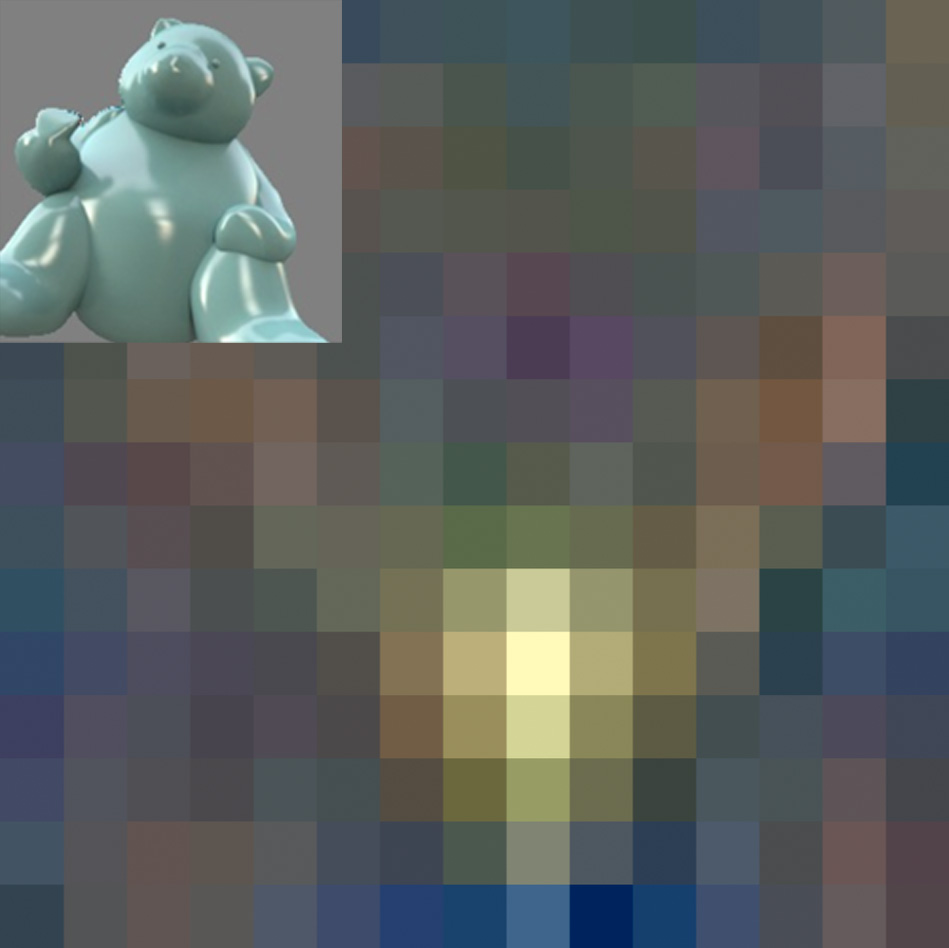
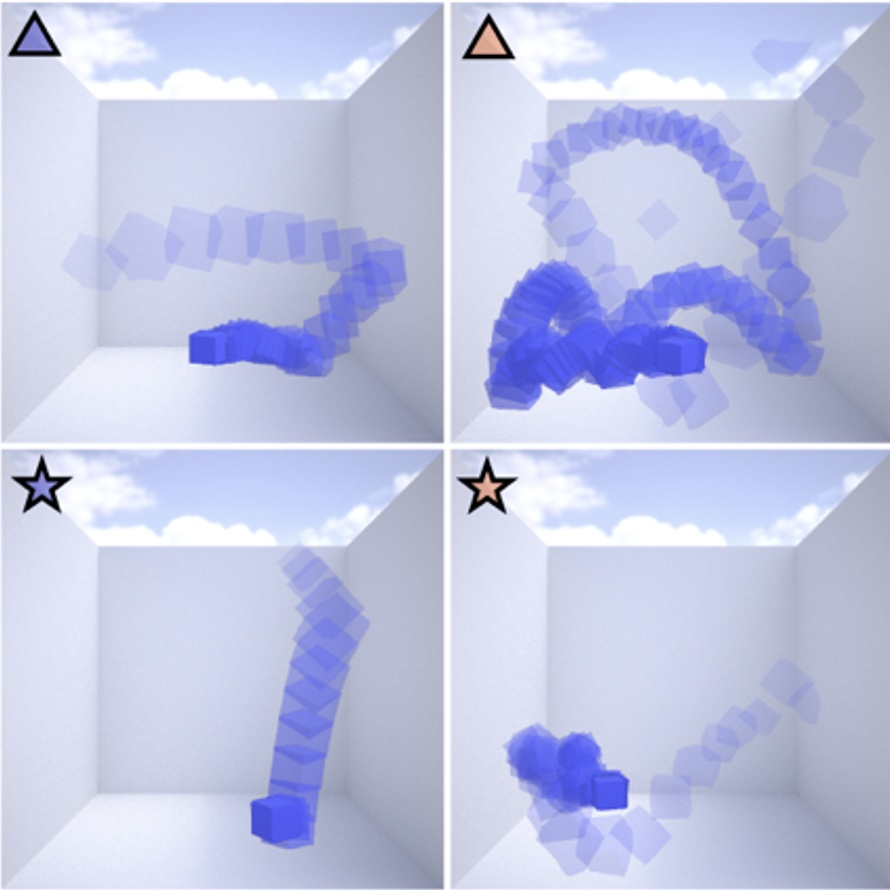
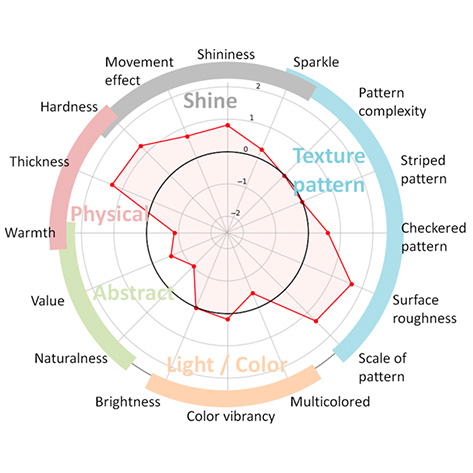
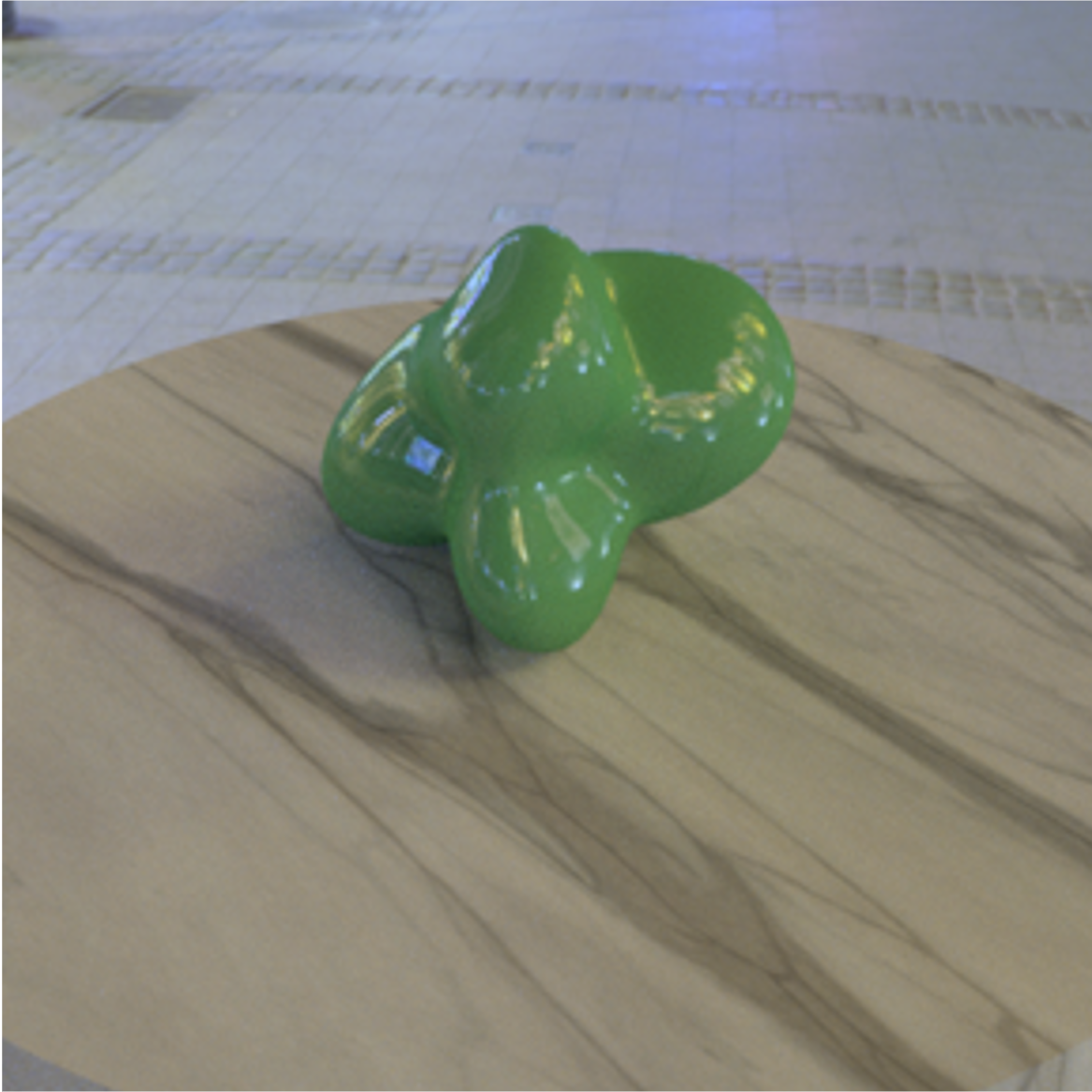
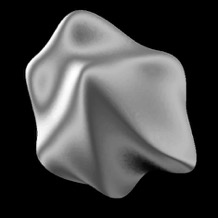
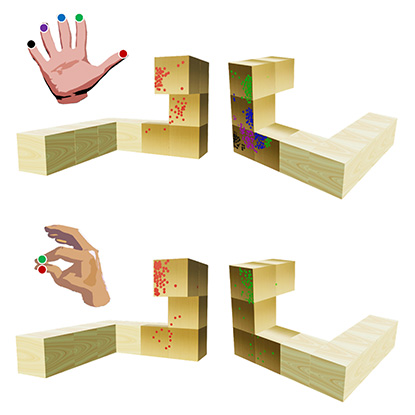
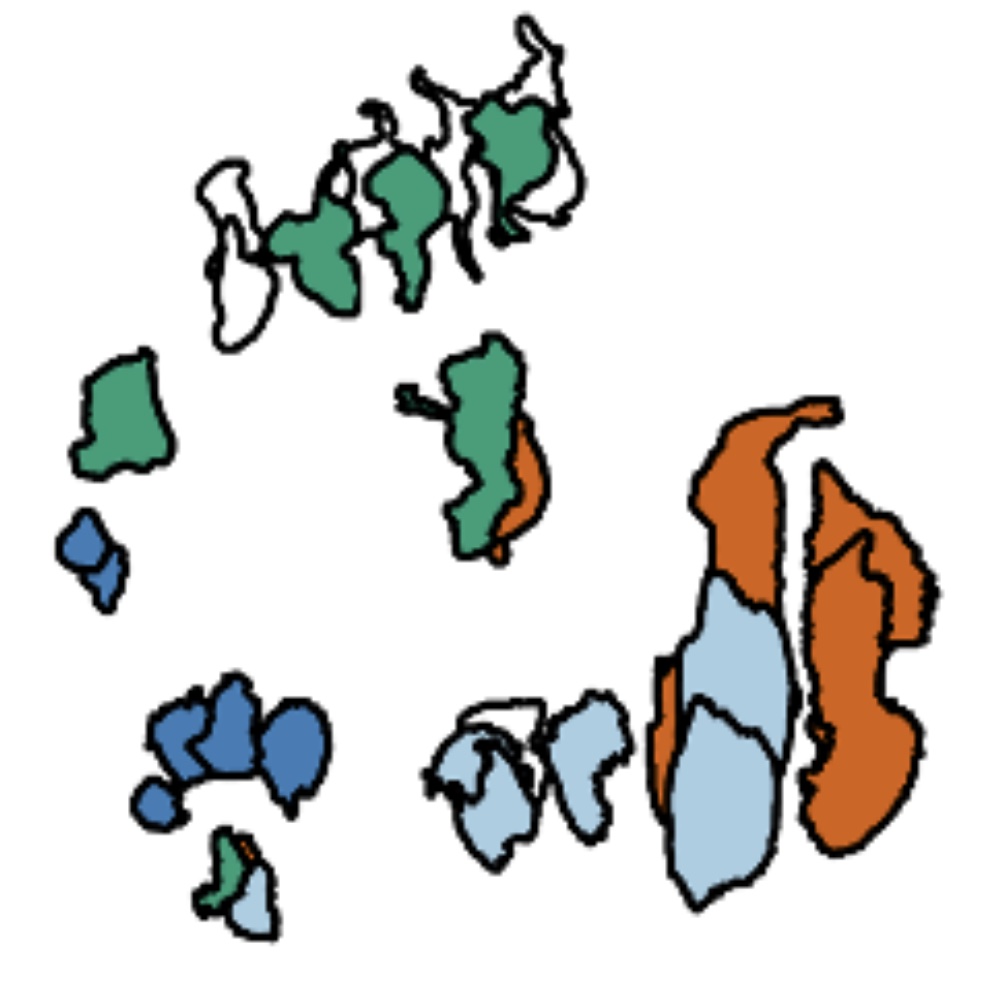
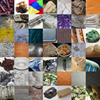
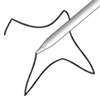
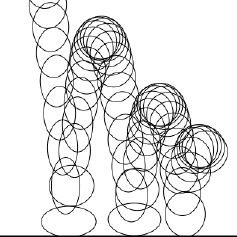
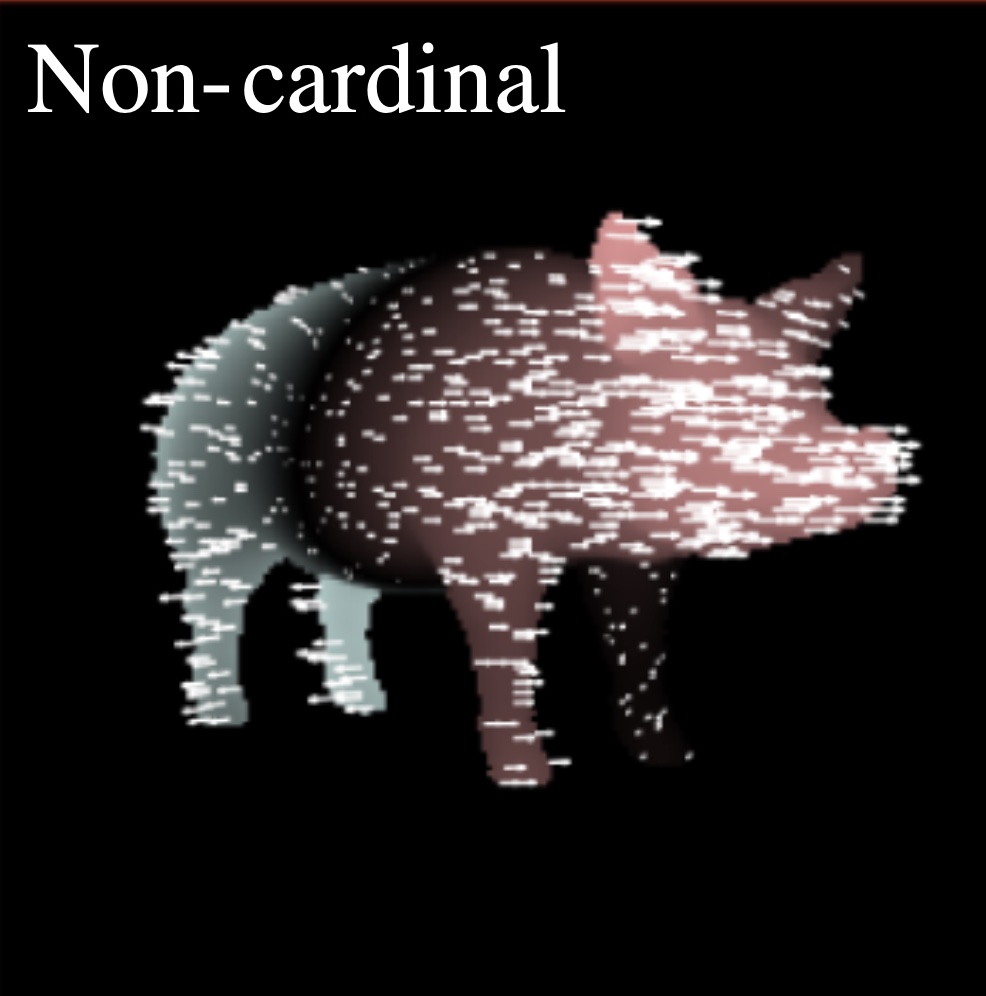
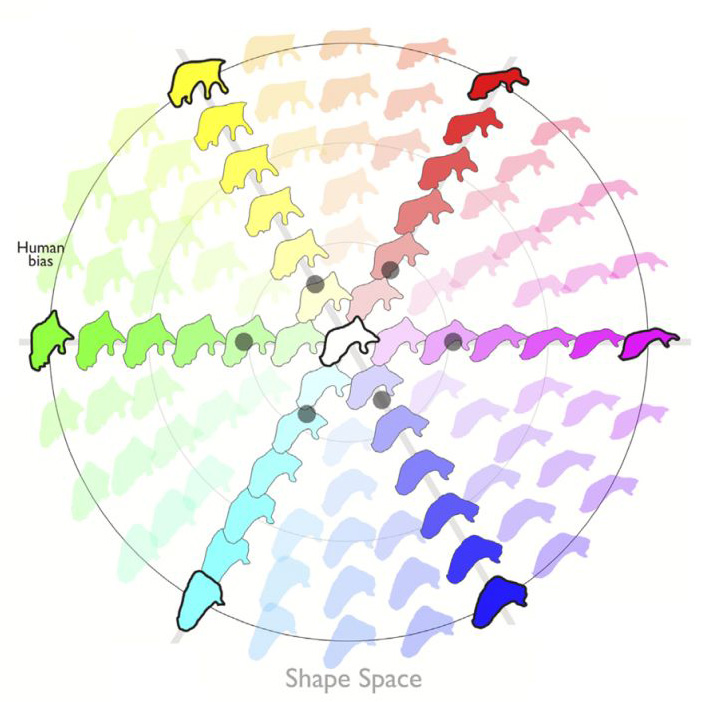
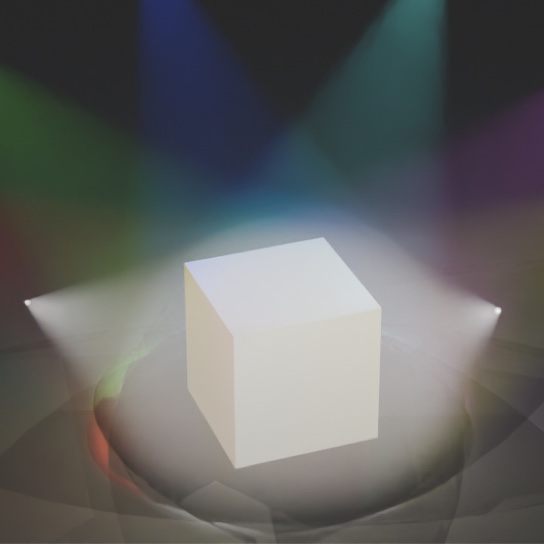
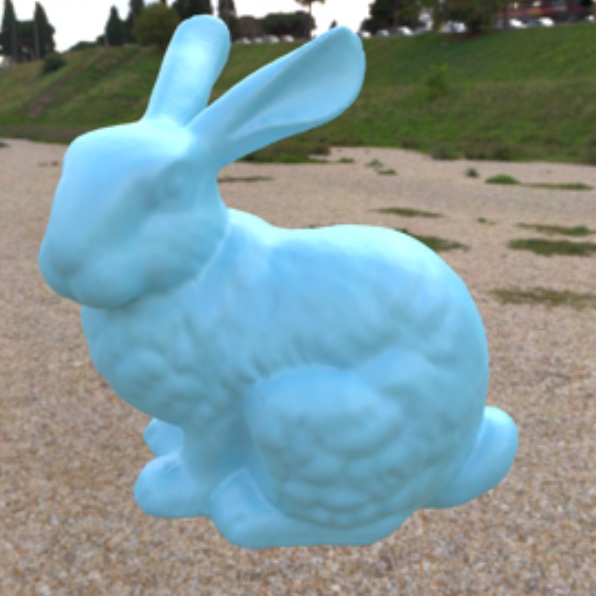
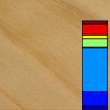
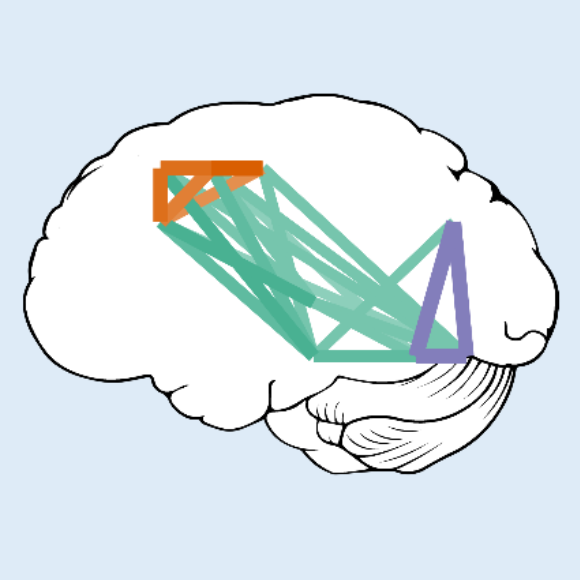
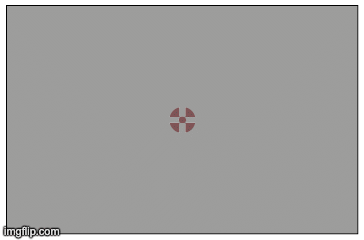
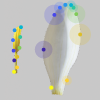

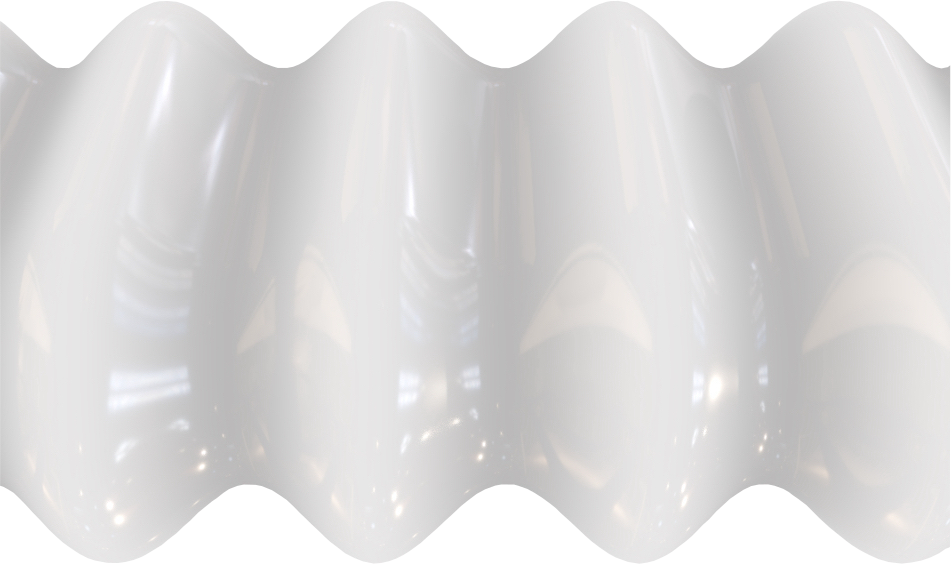
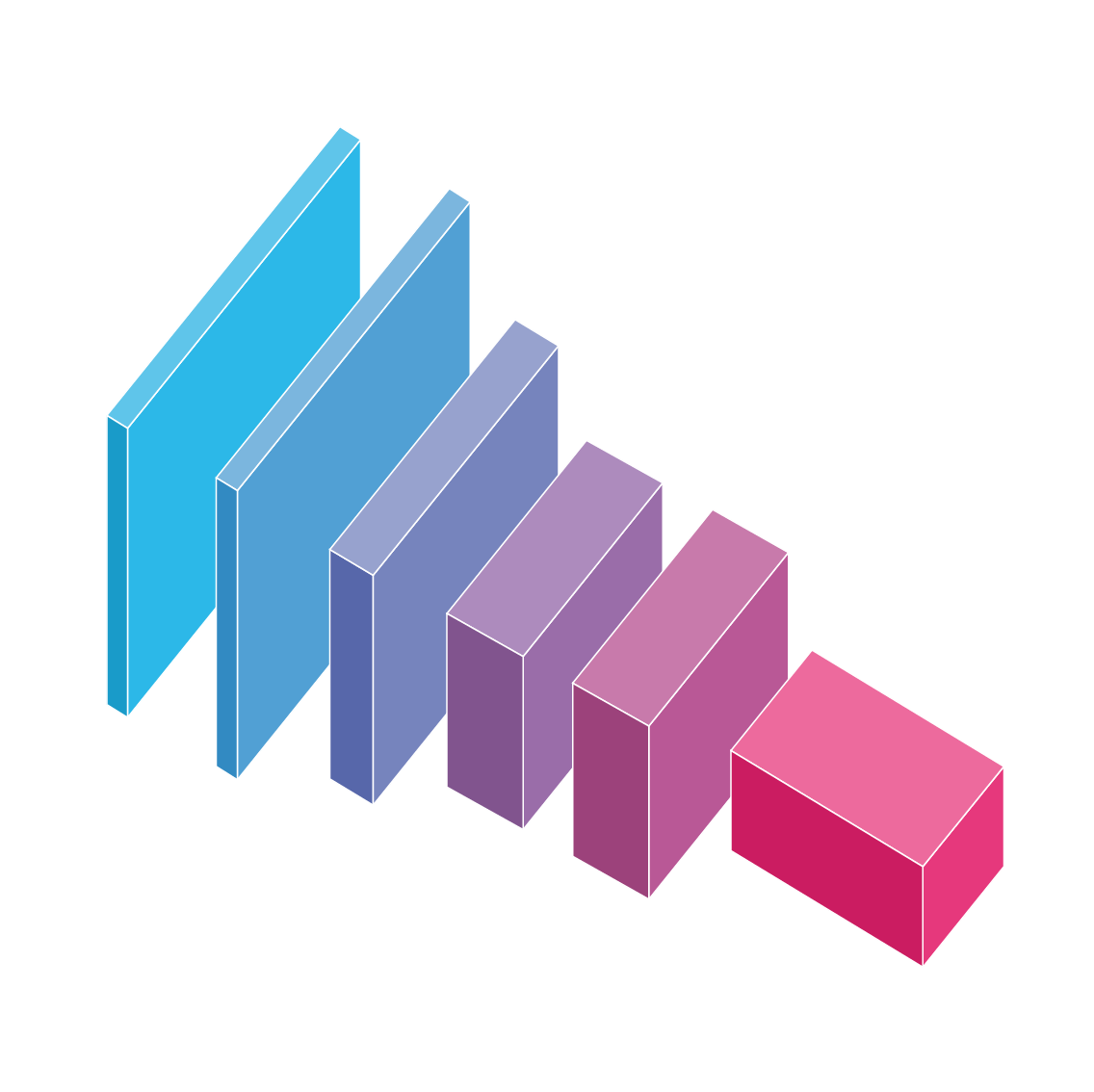
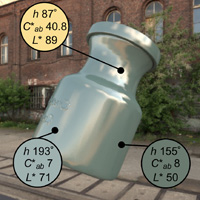
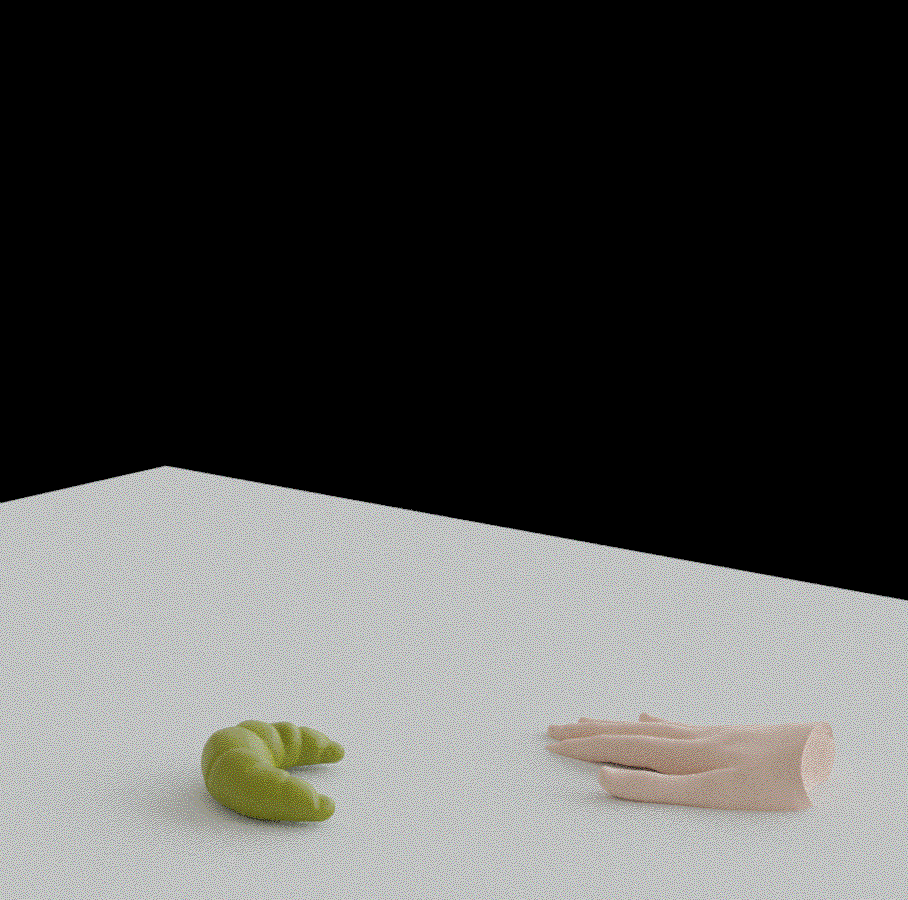
.jpg)
